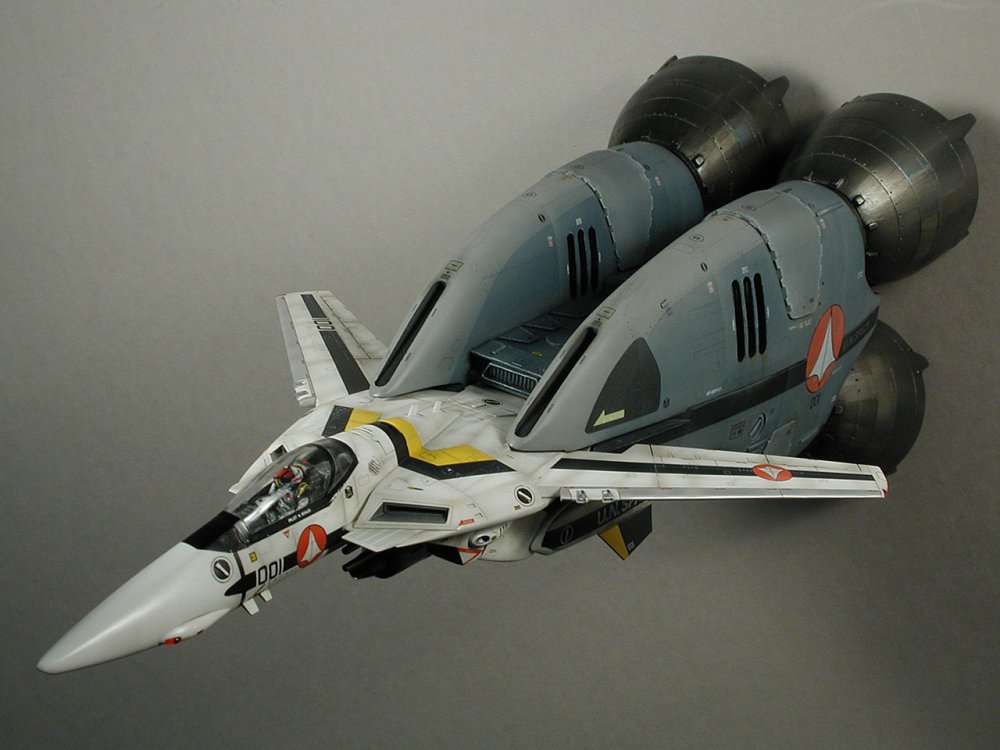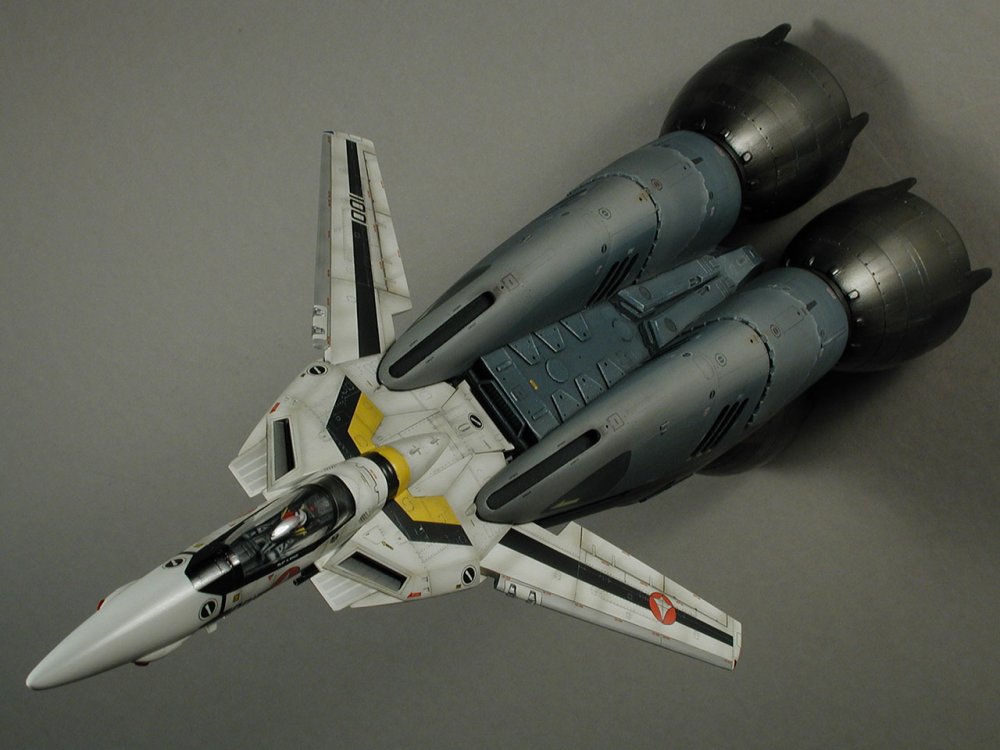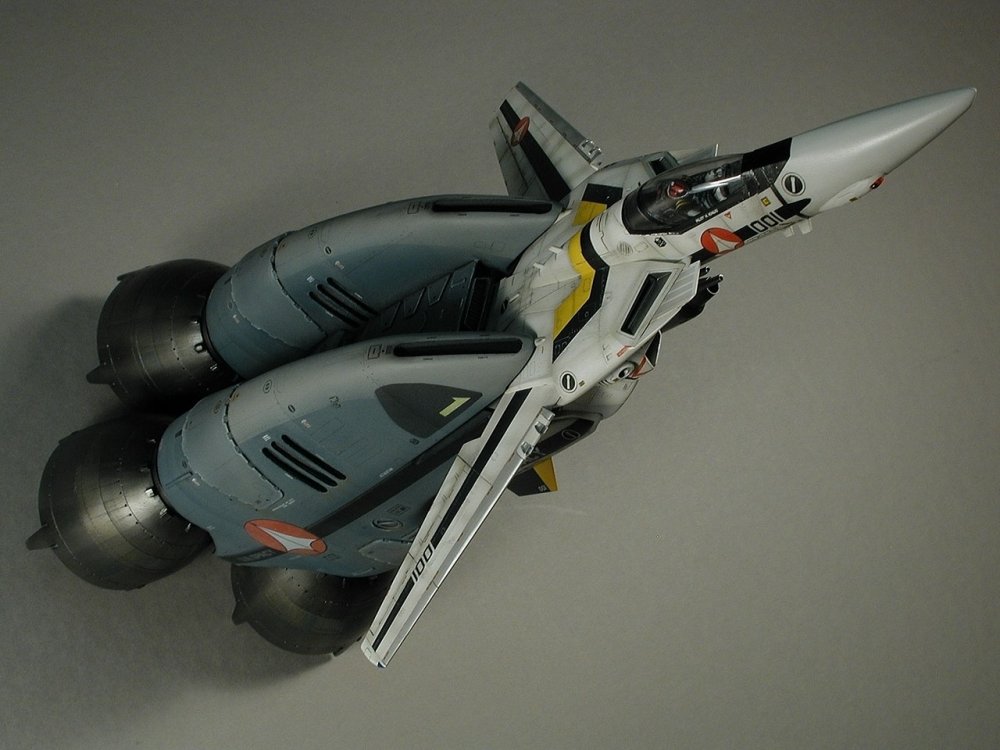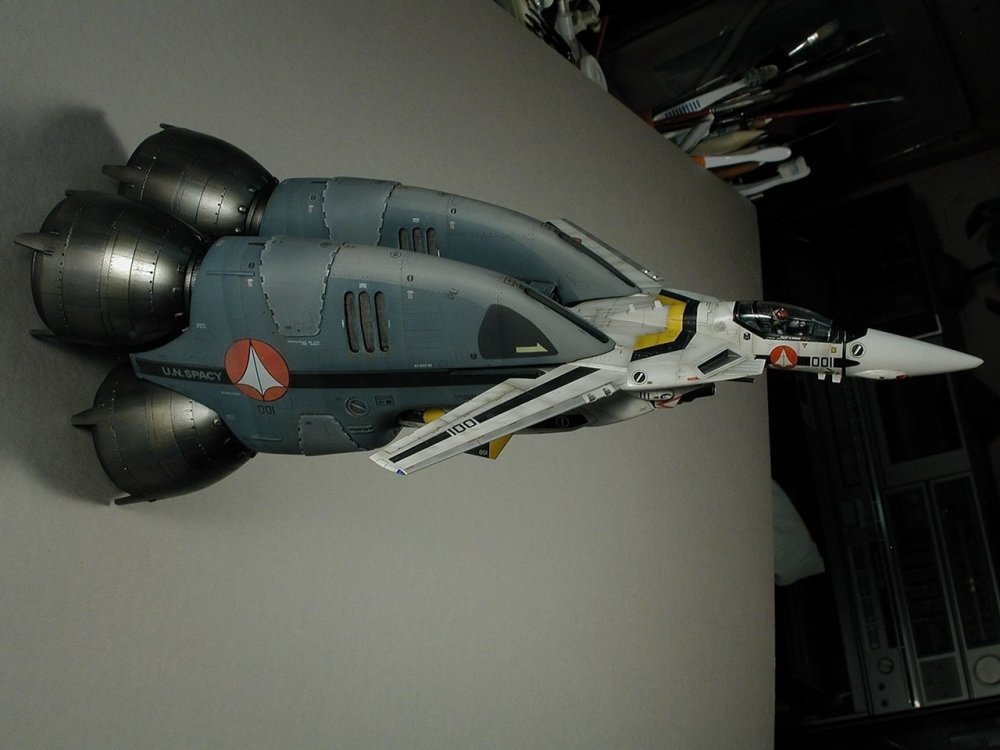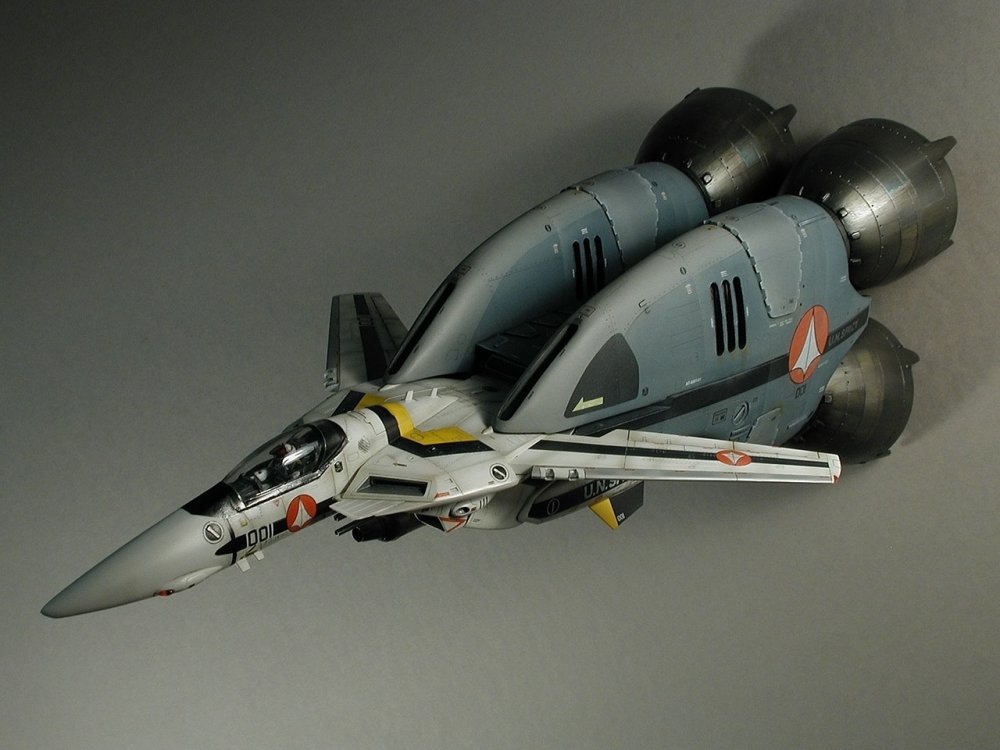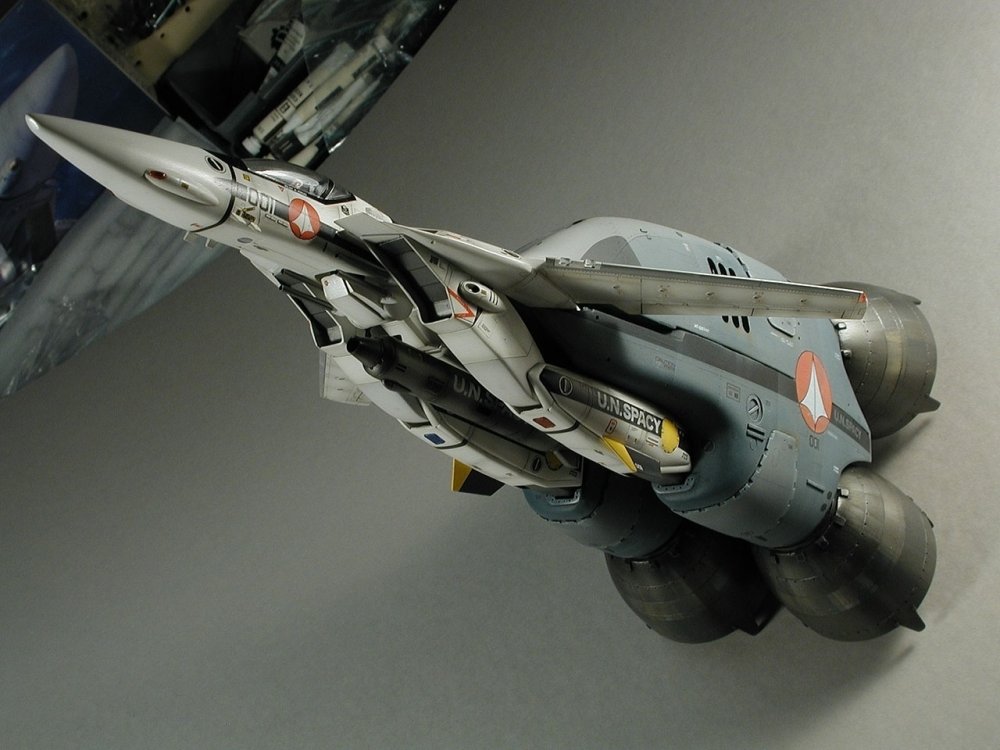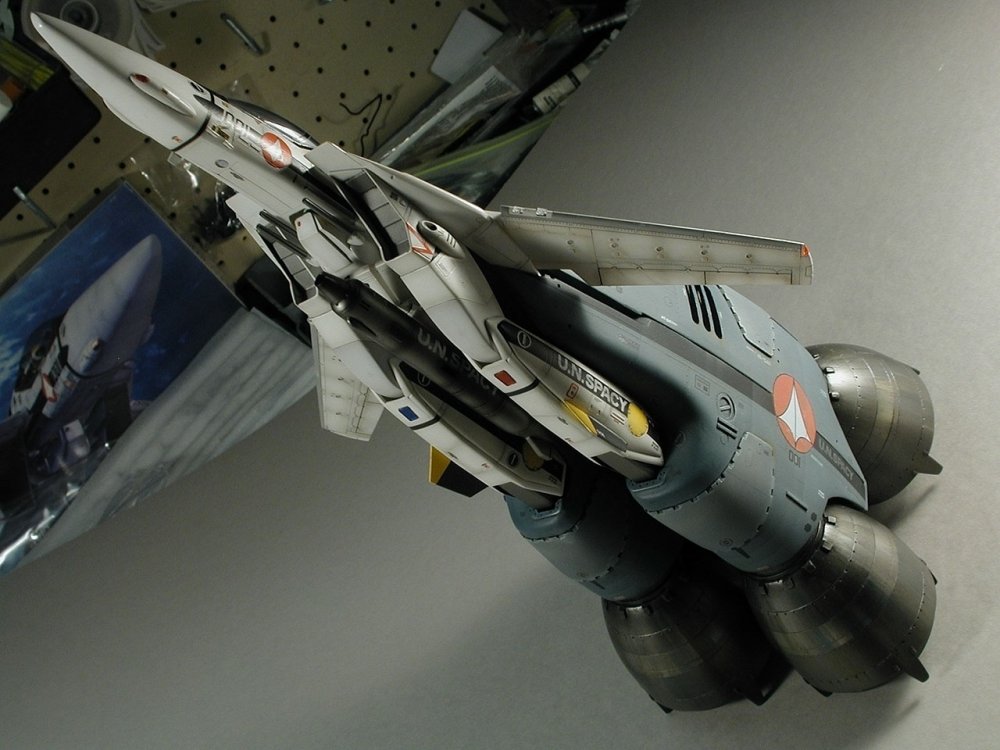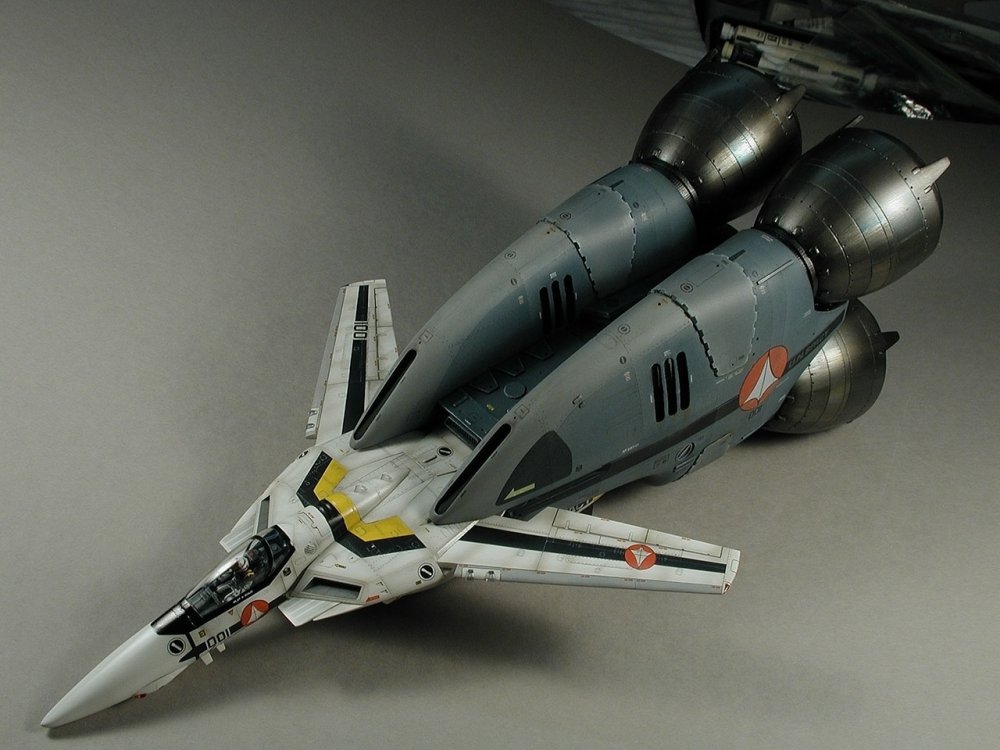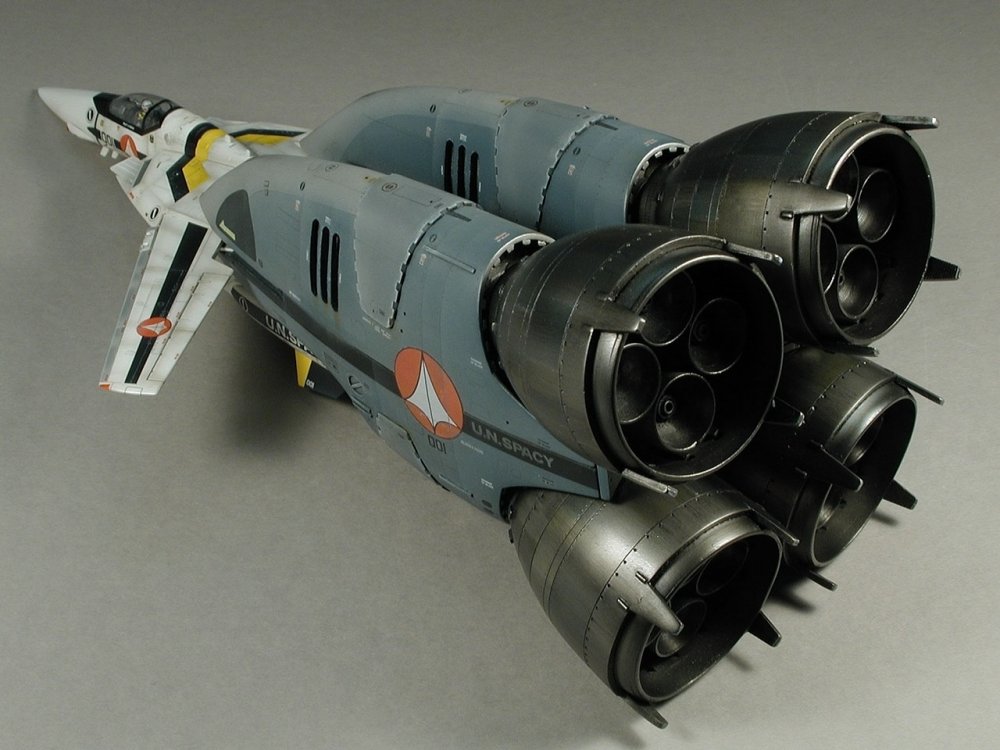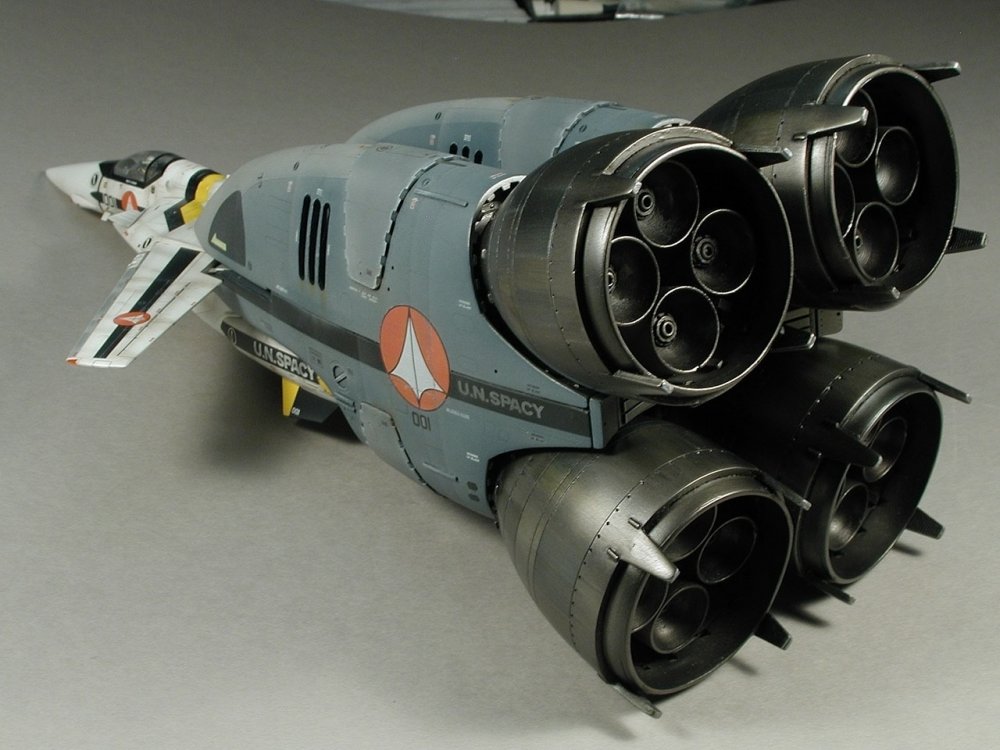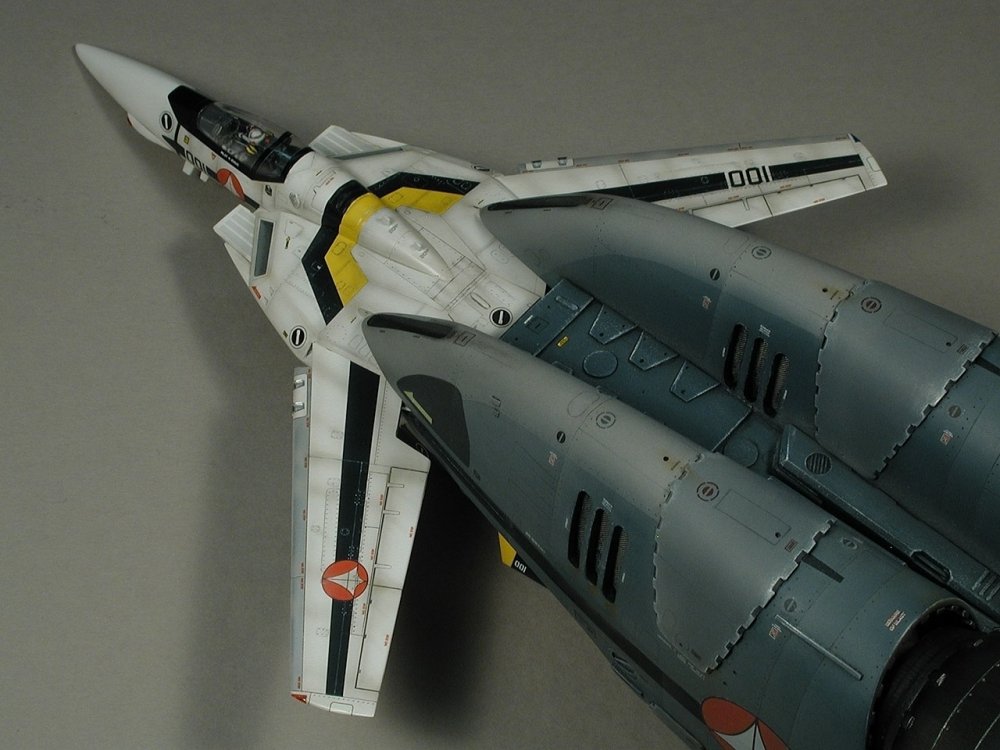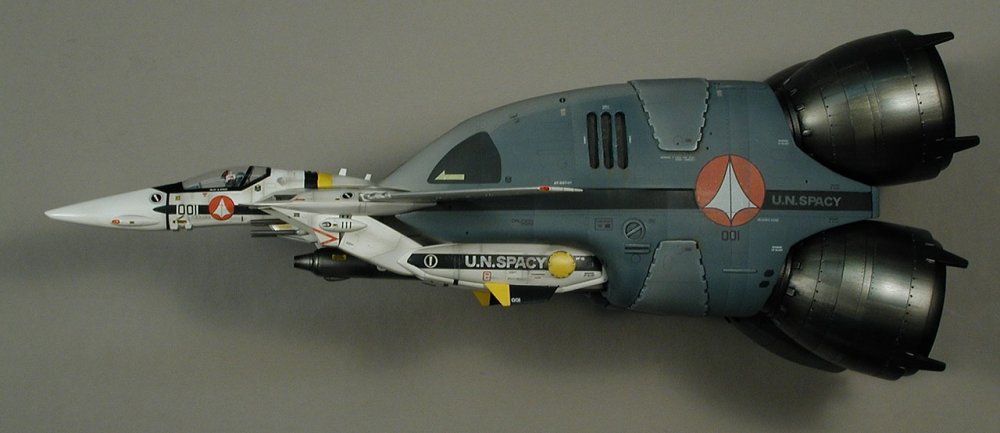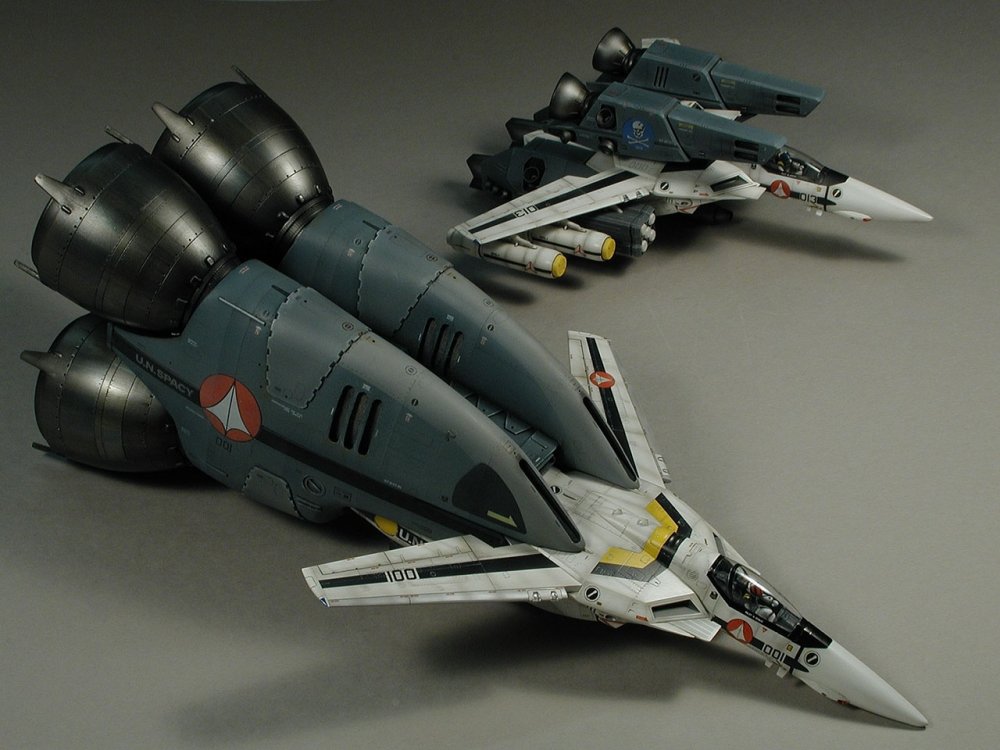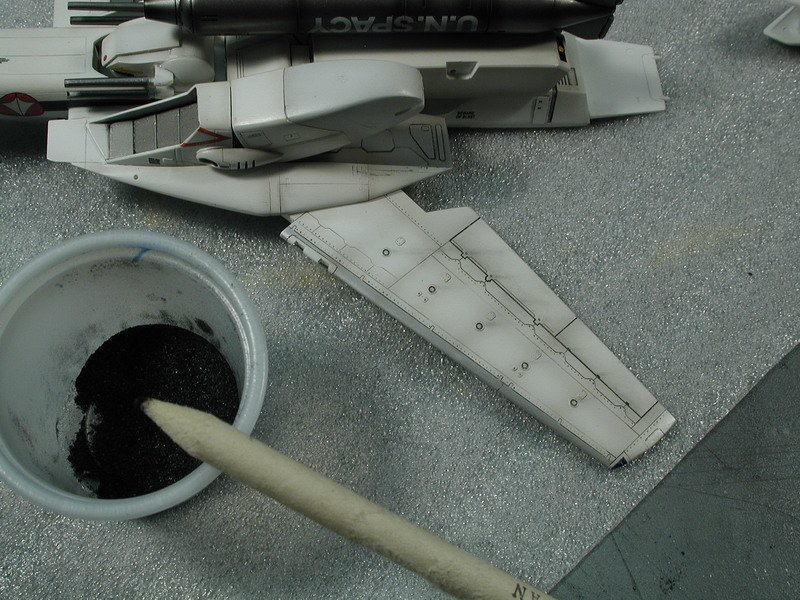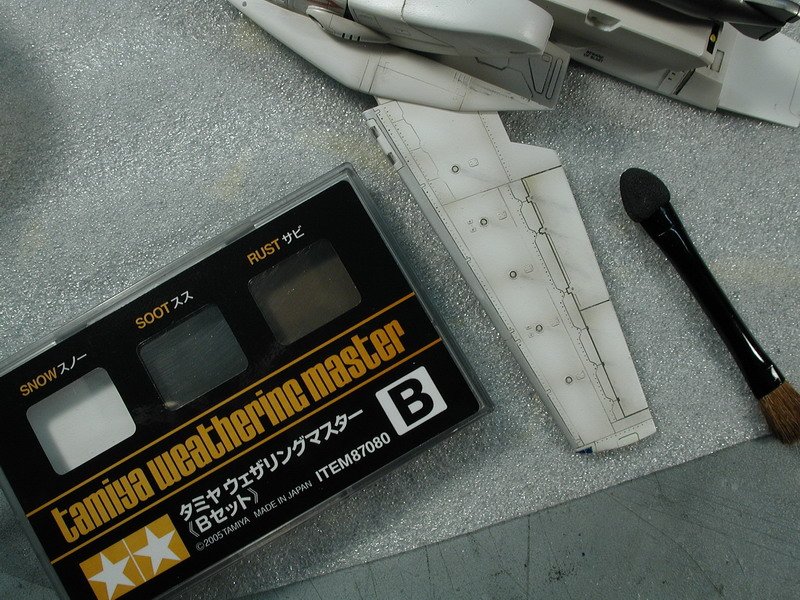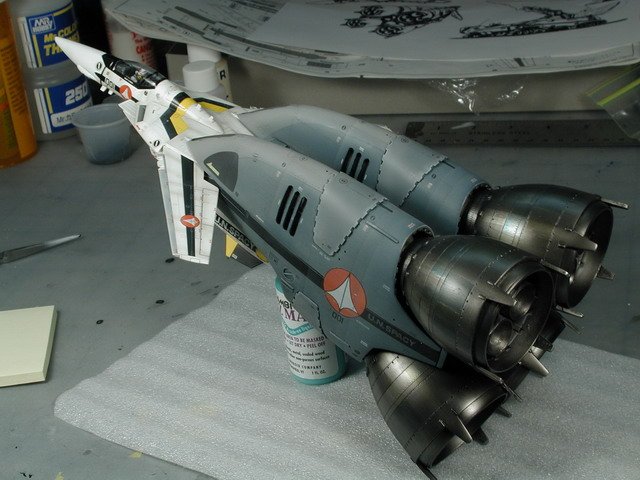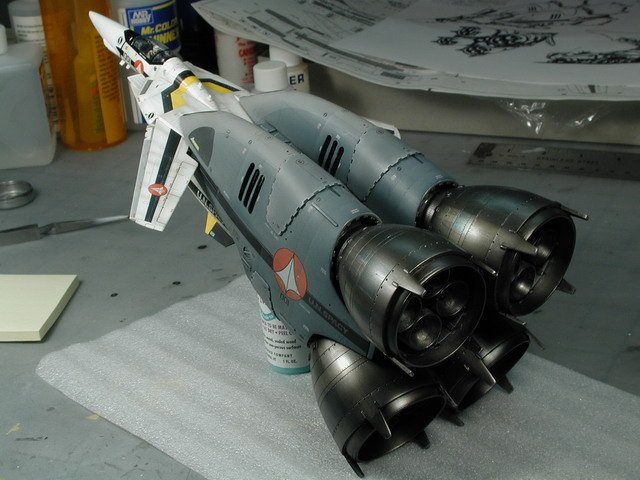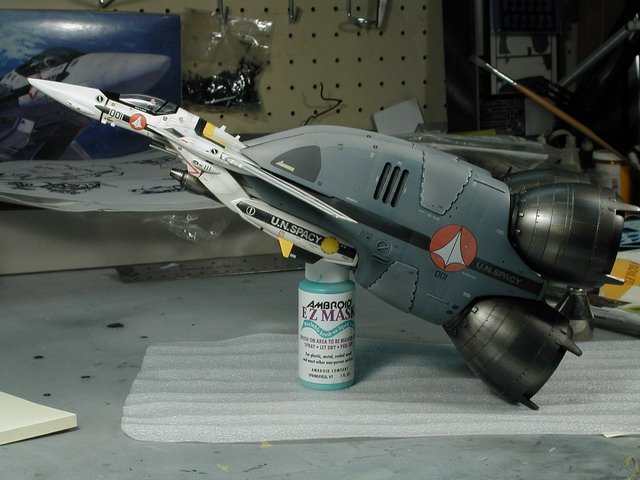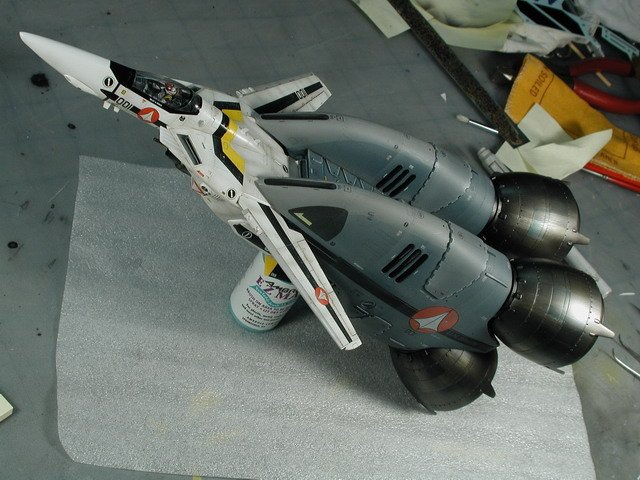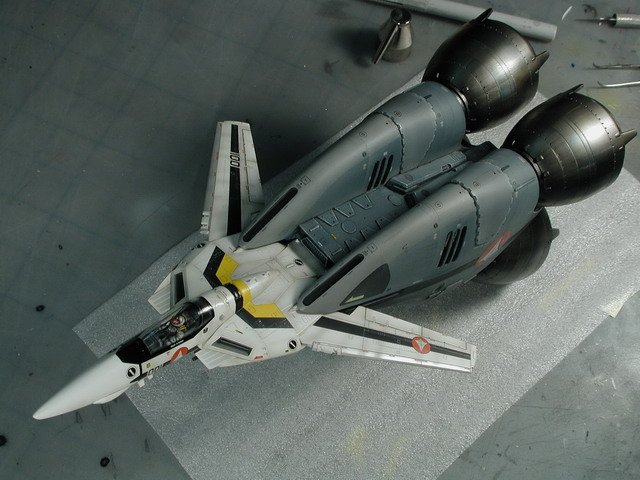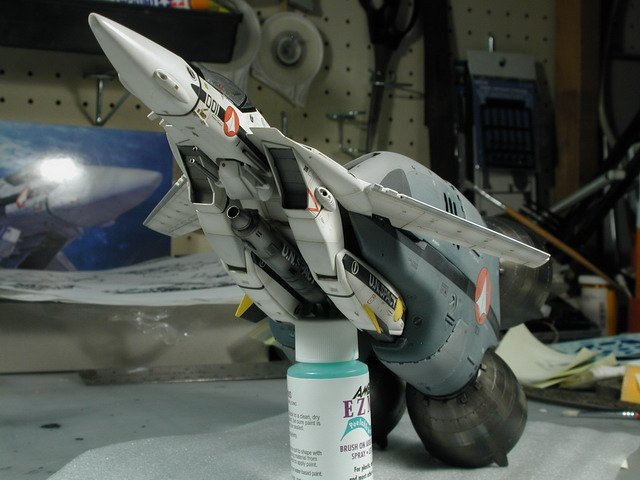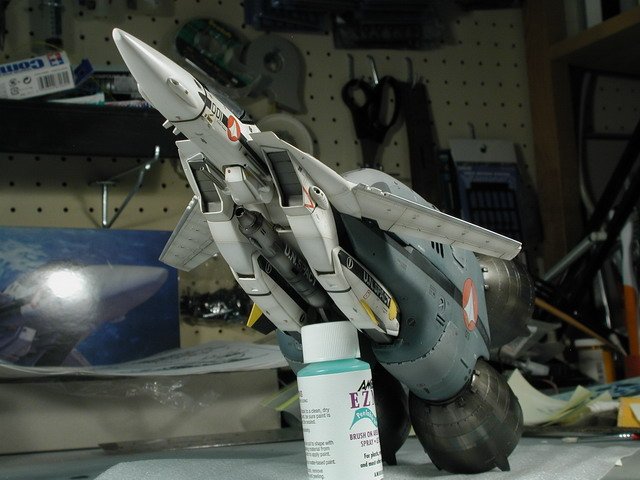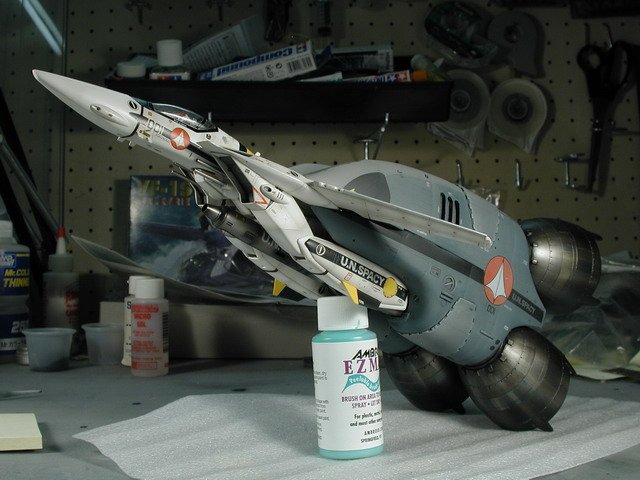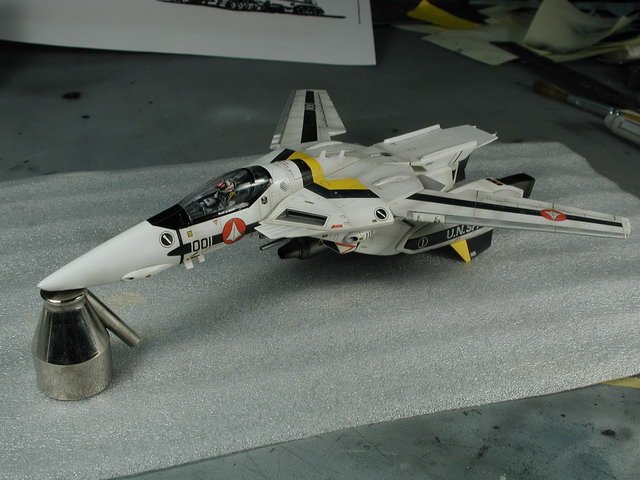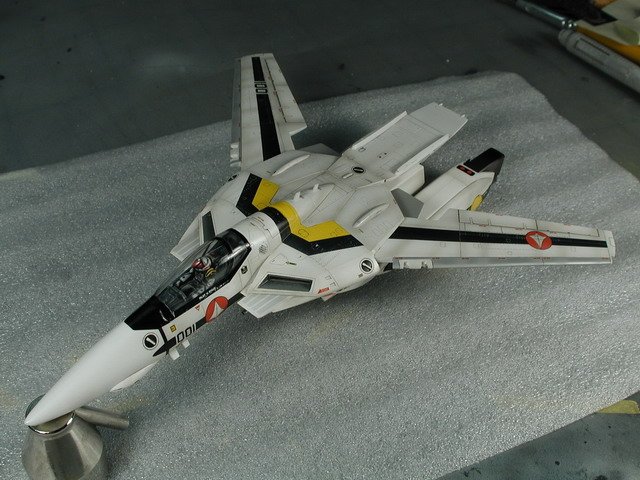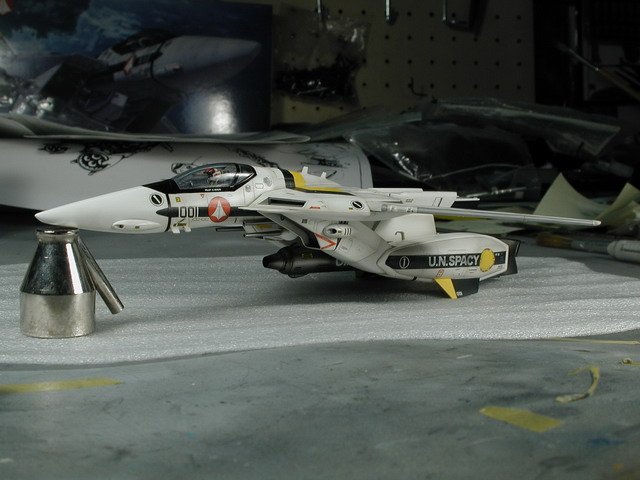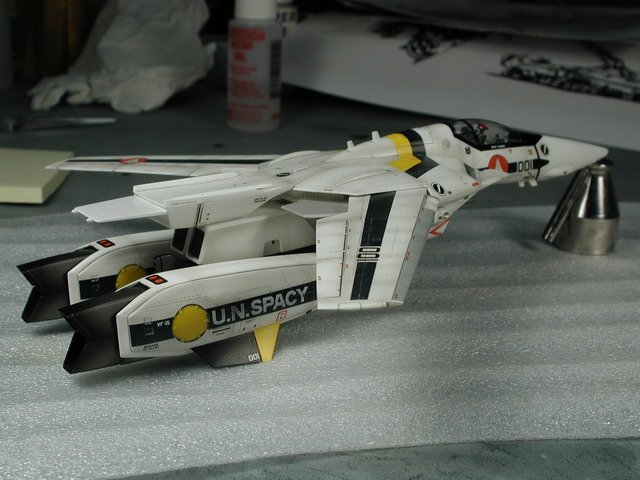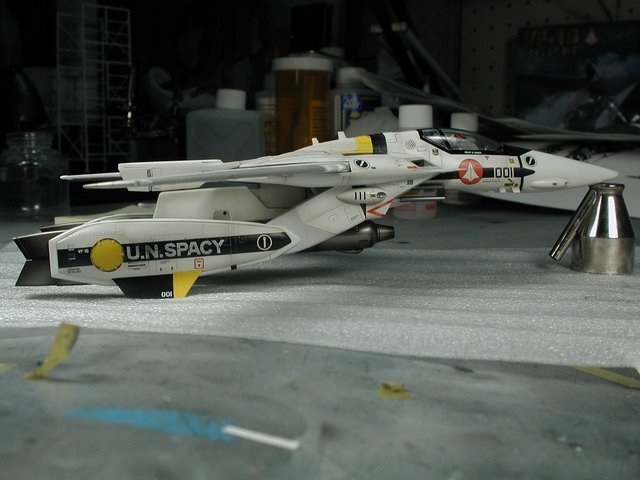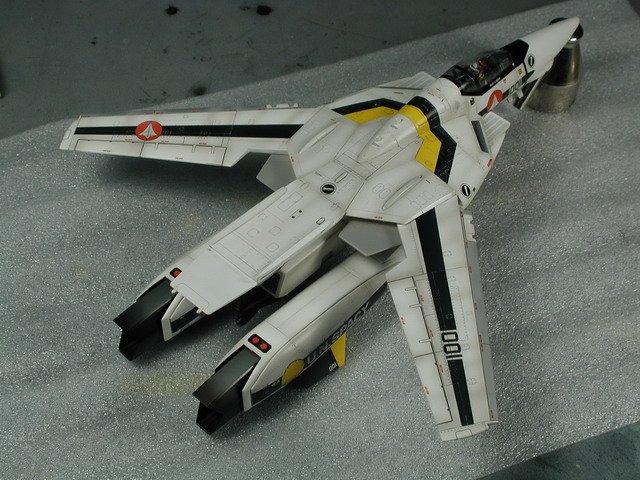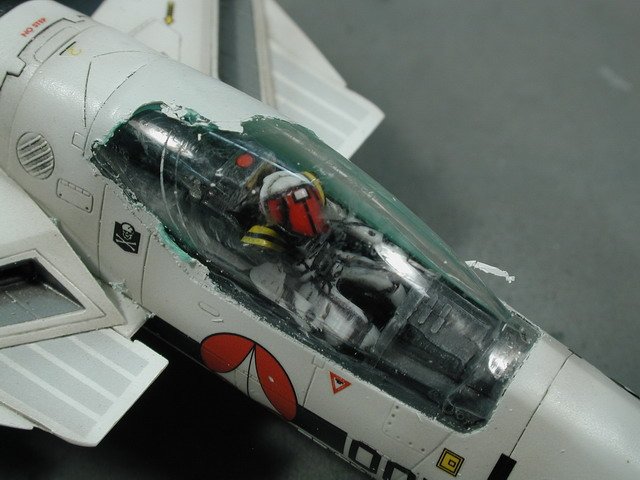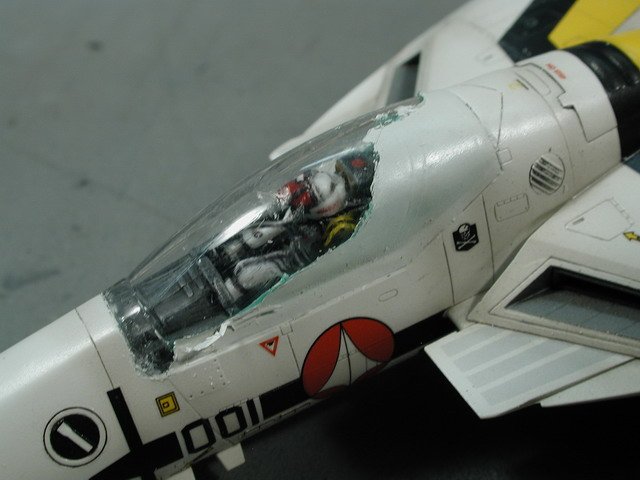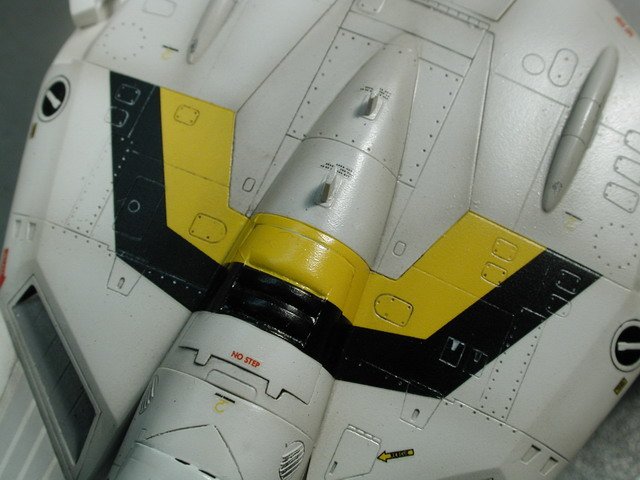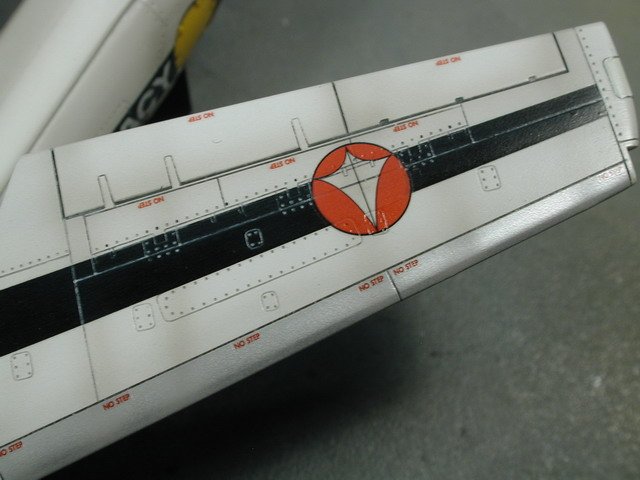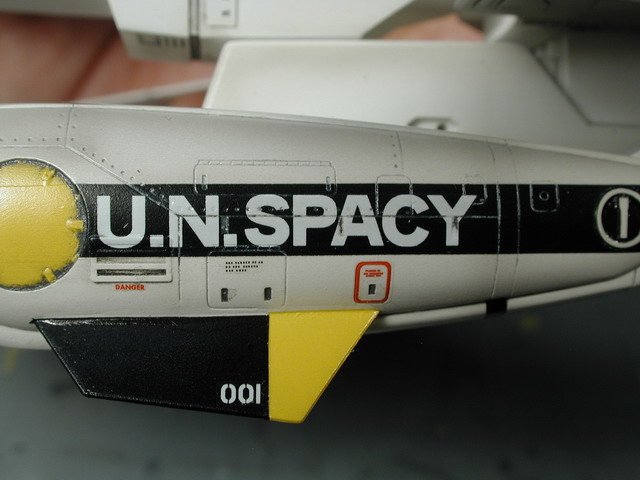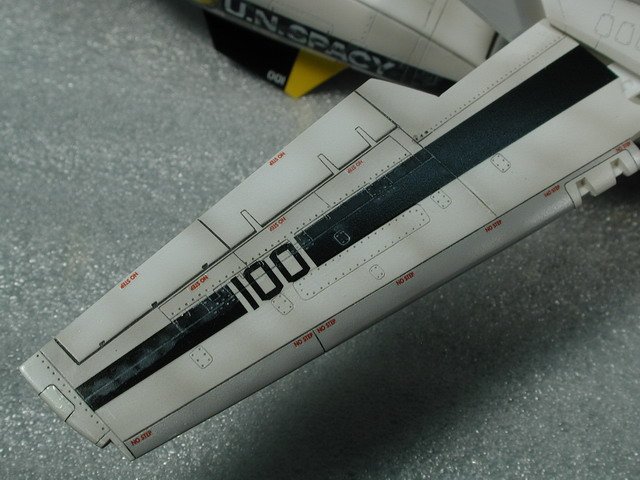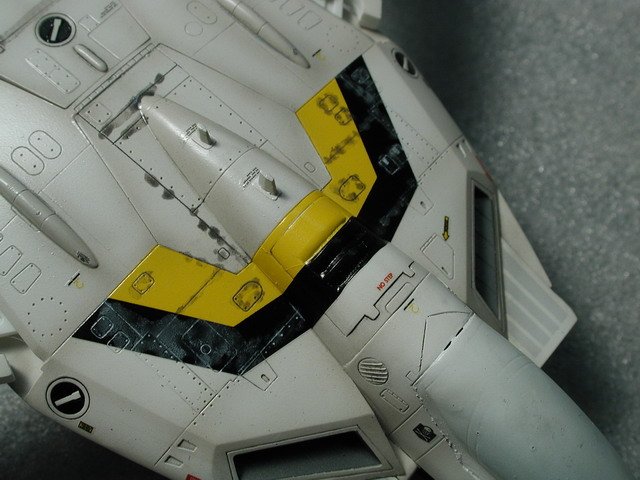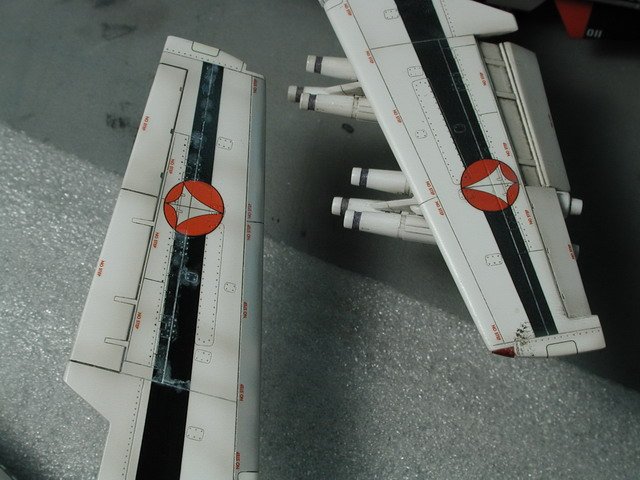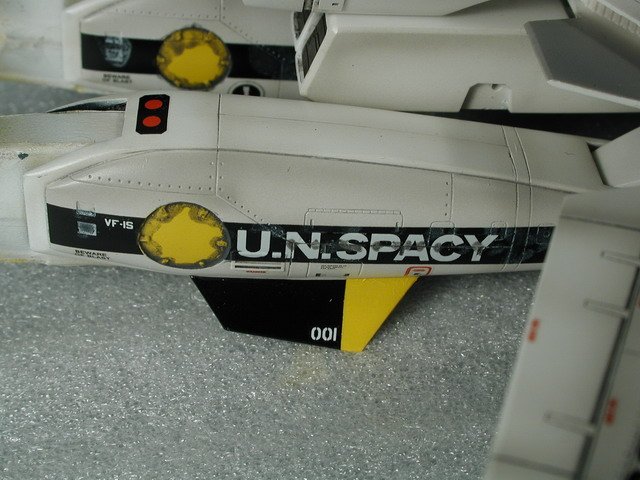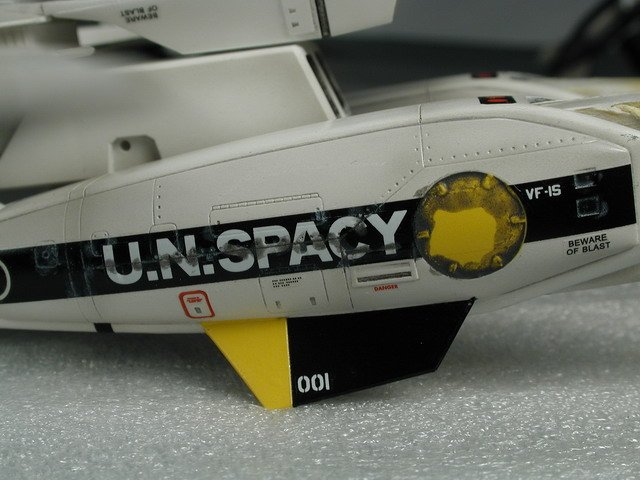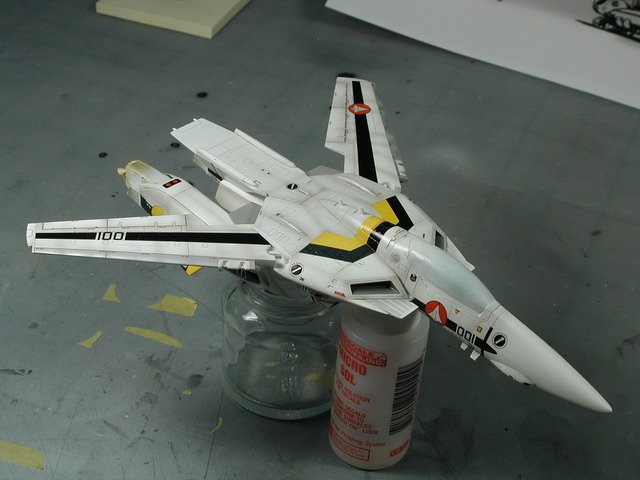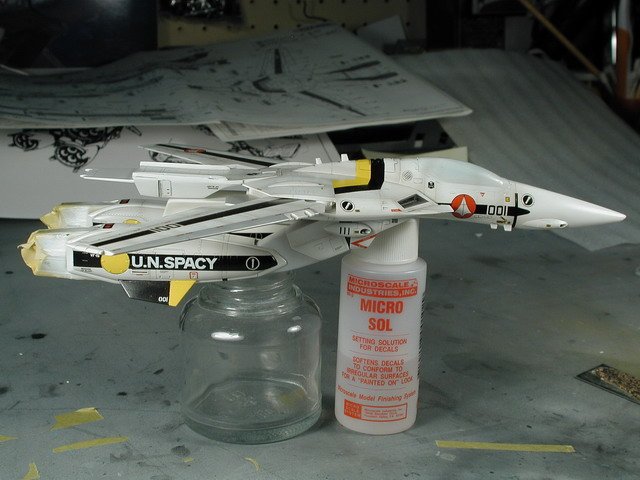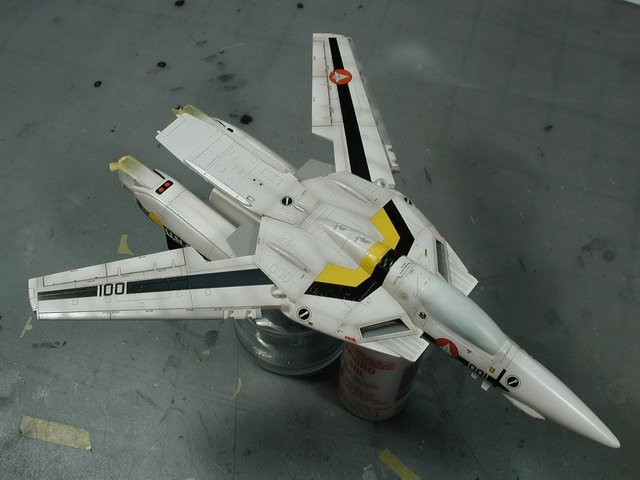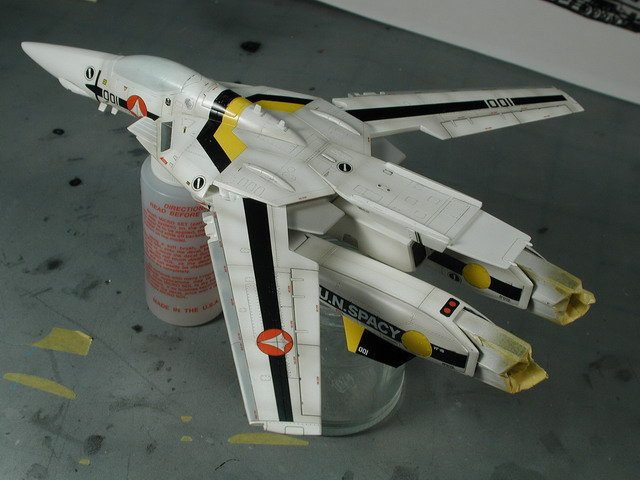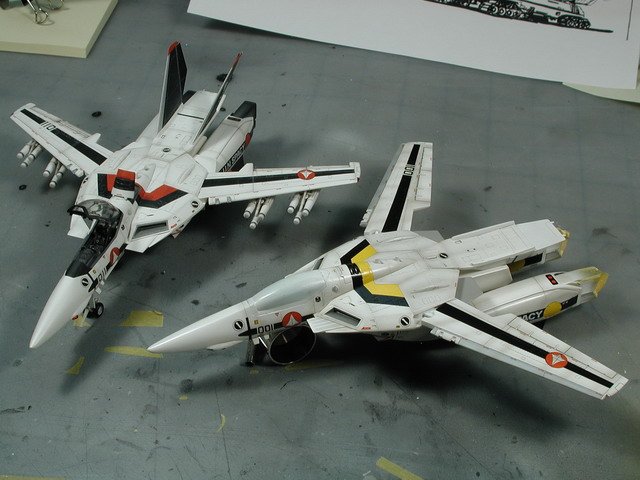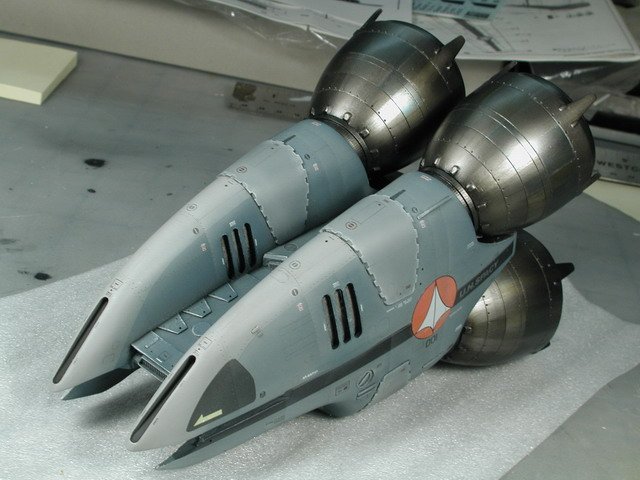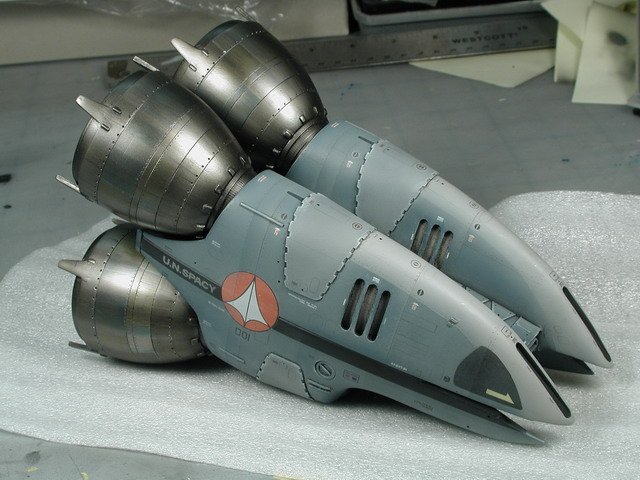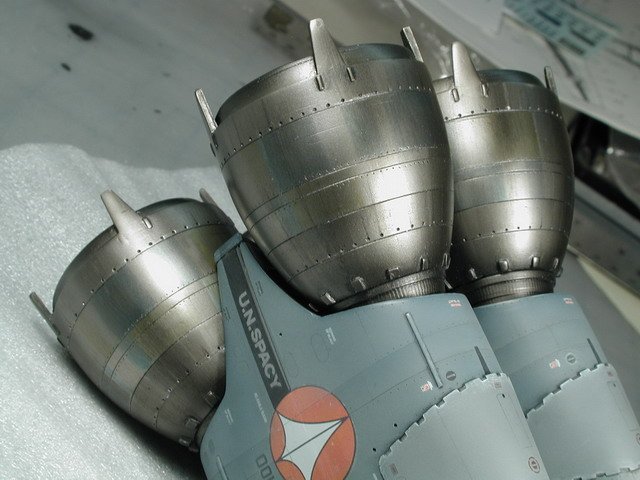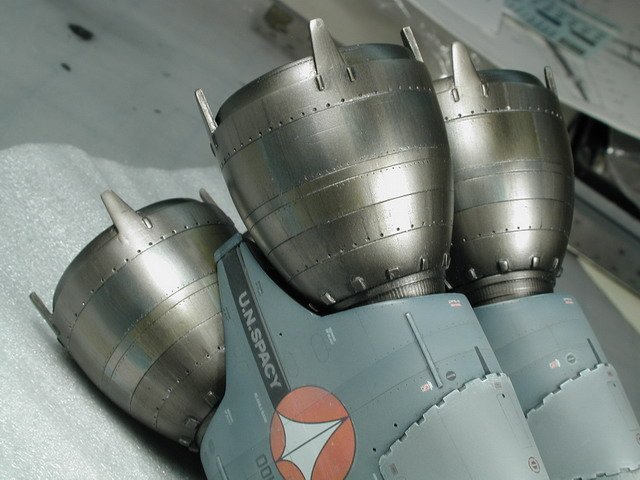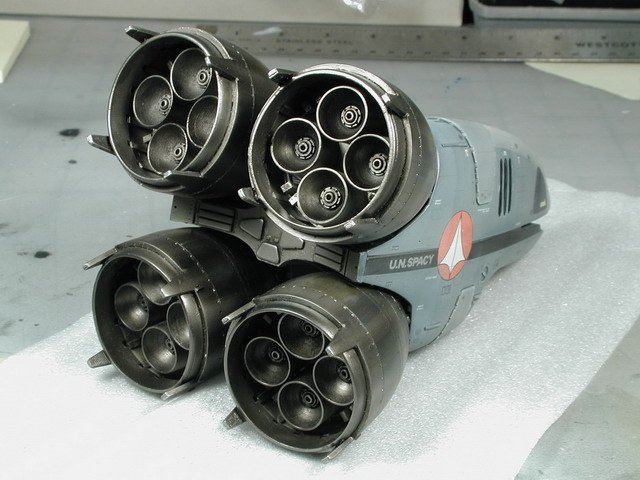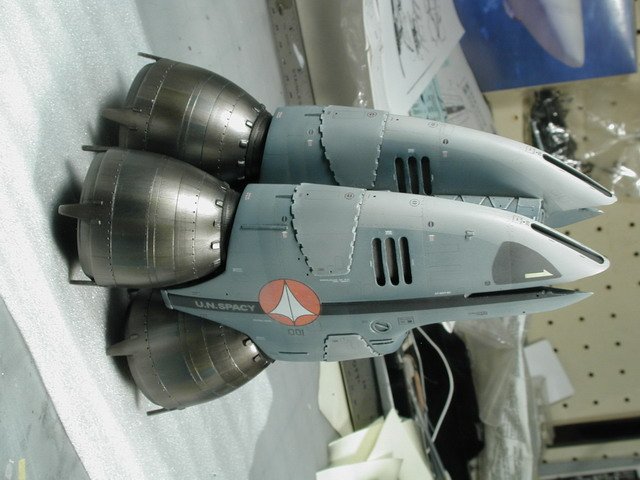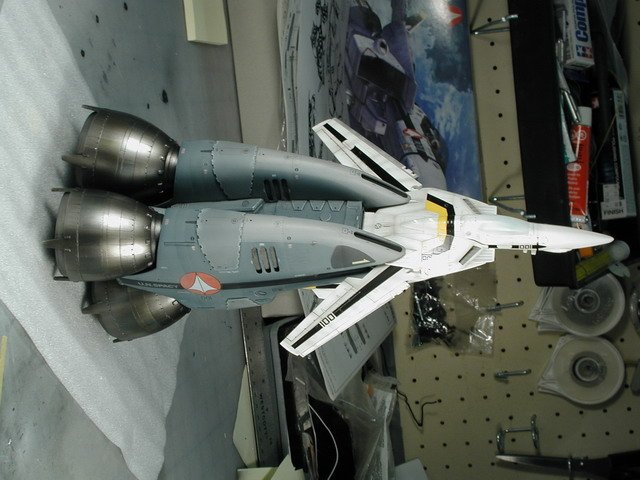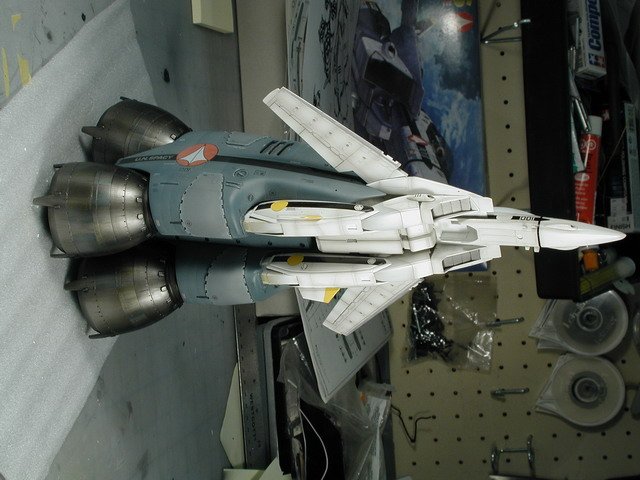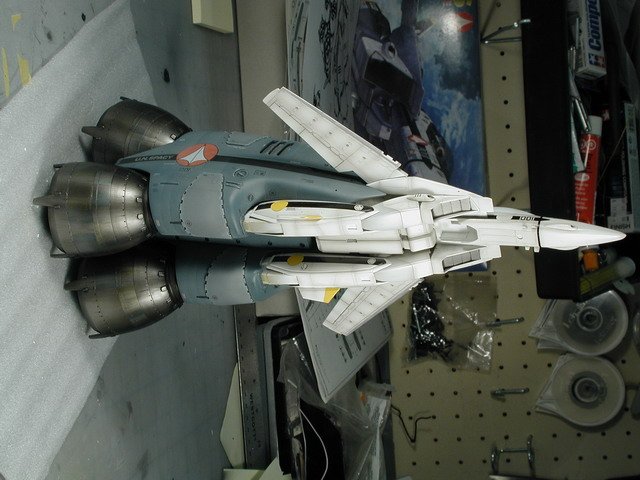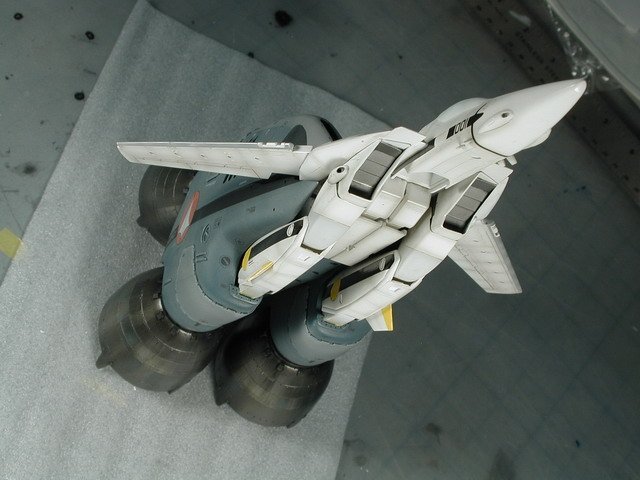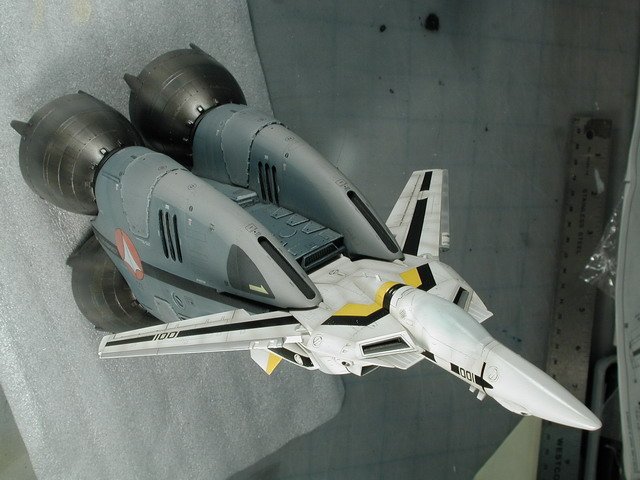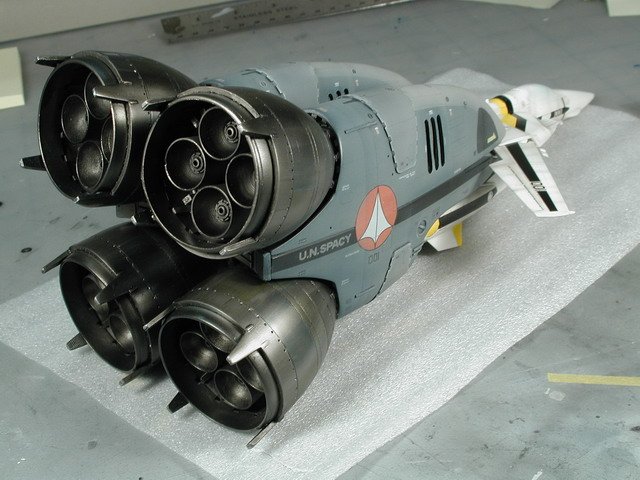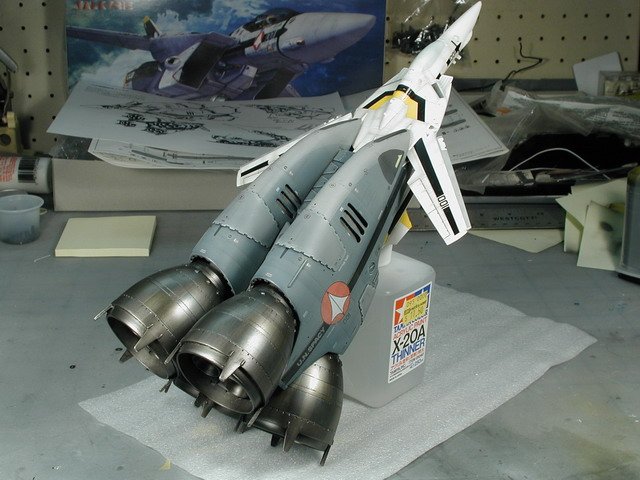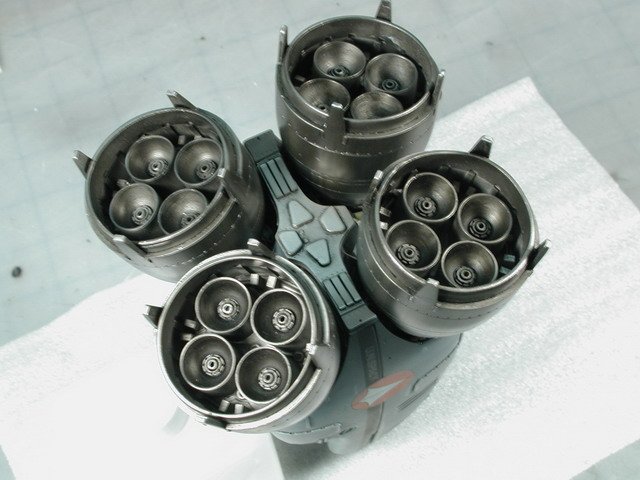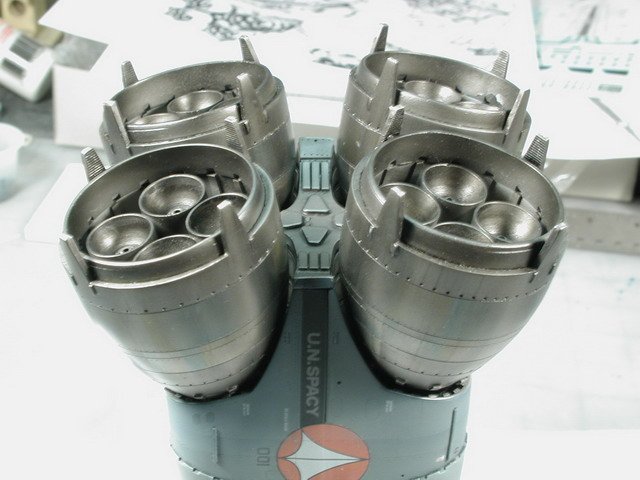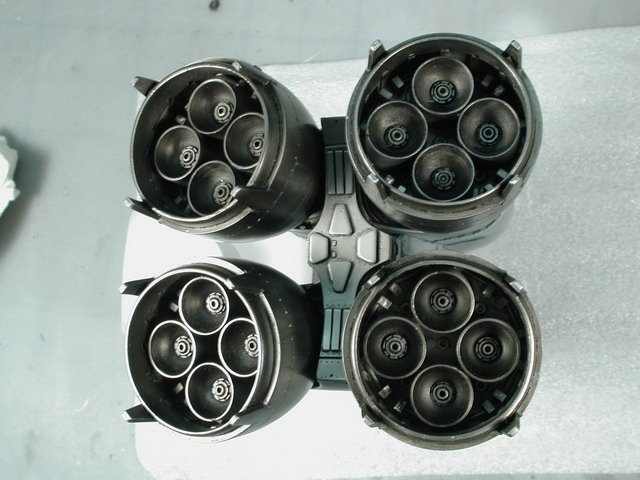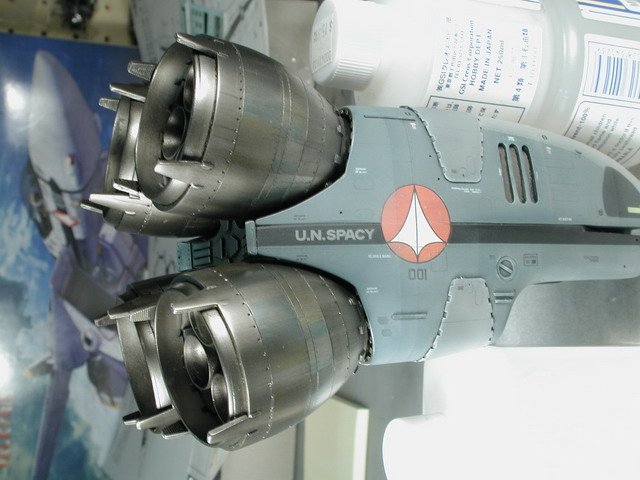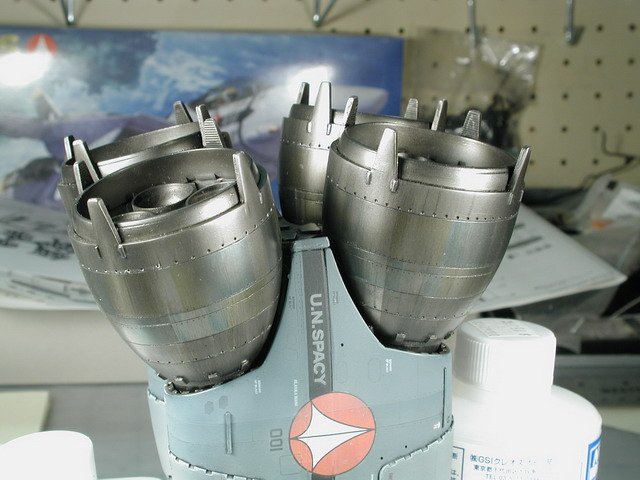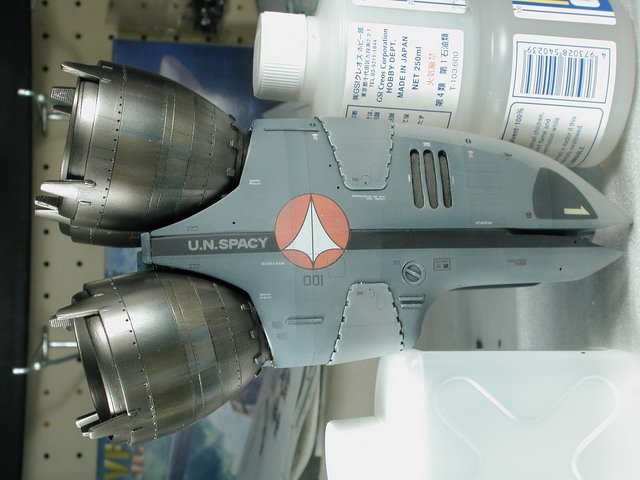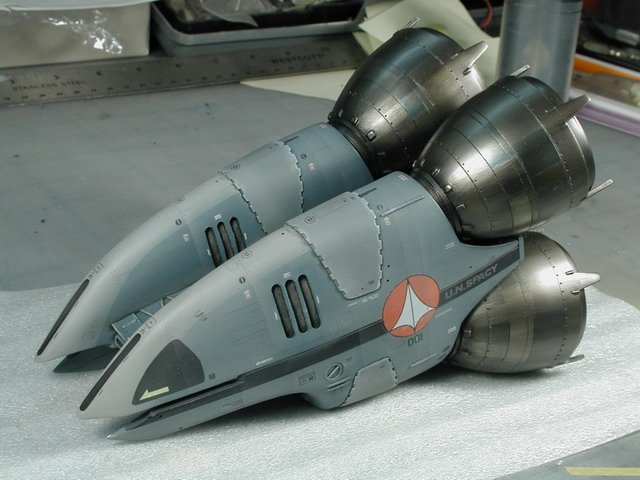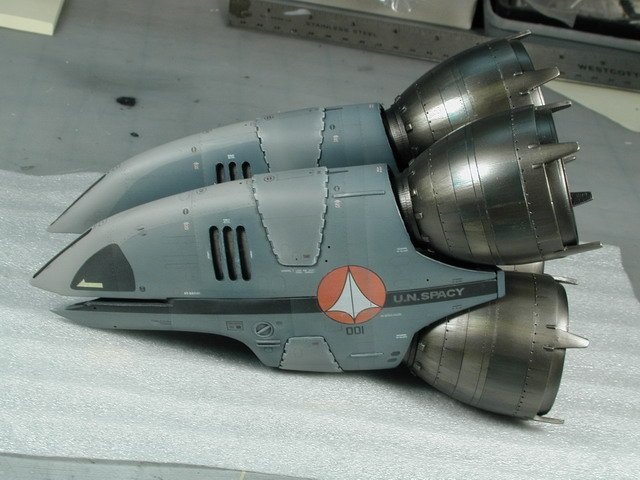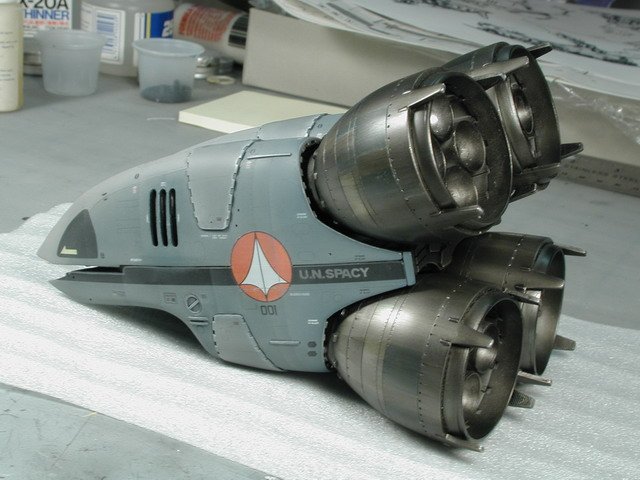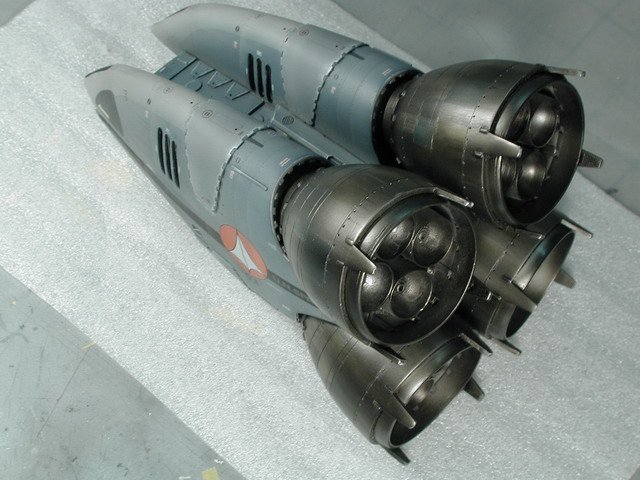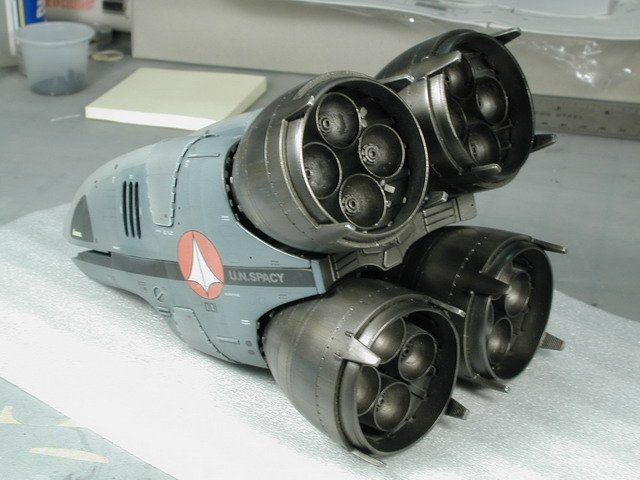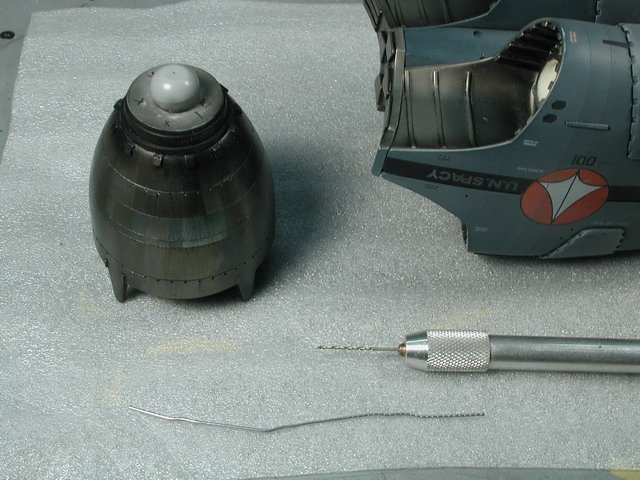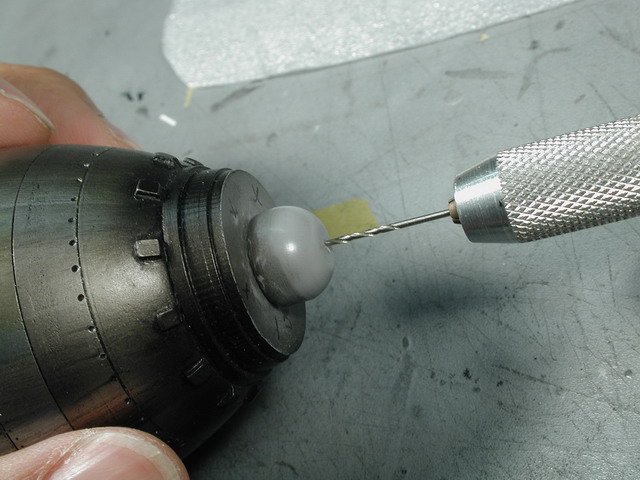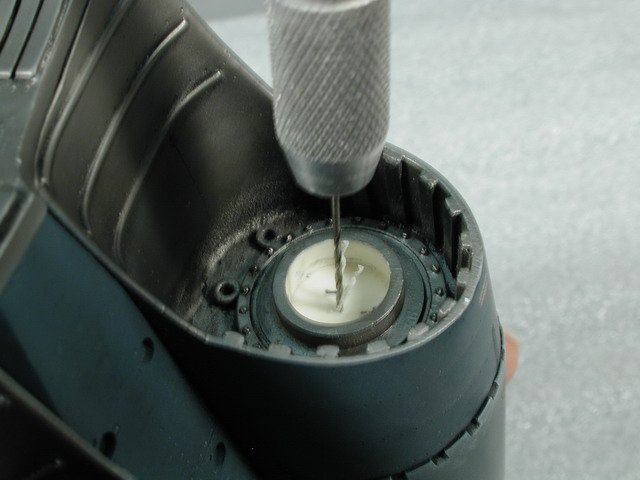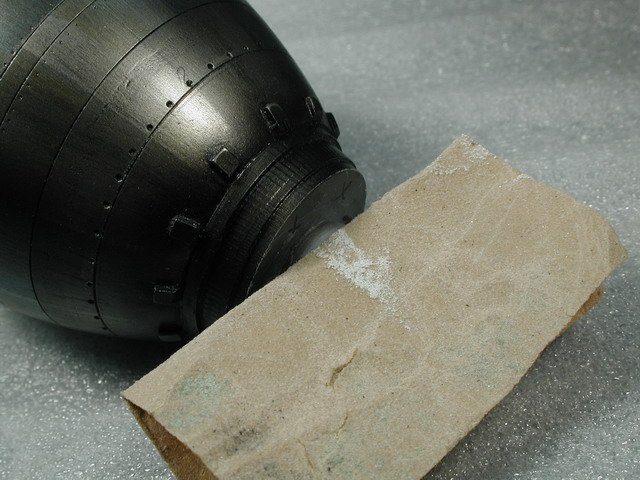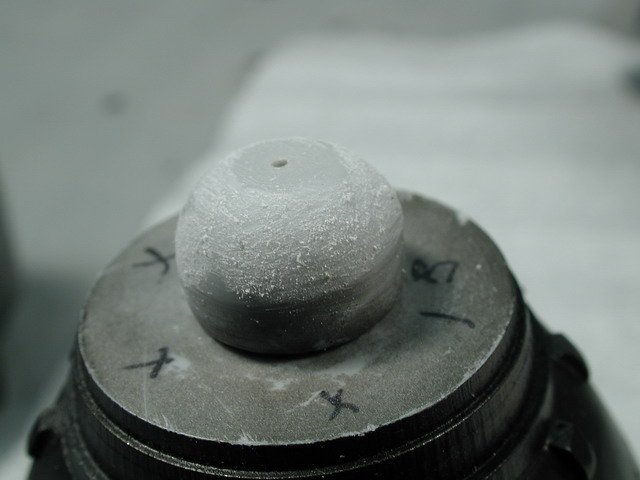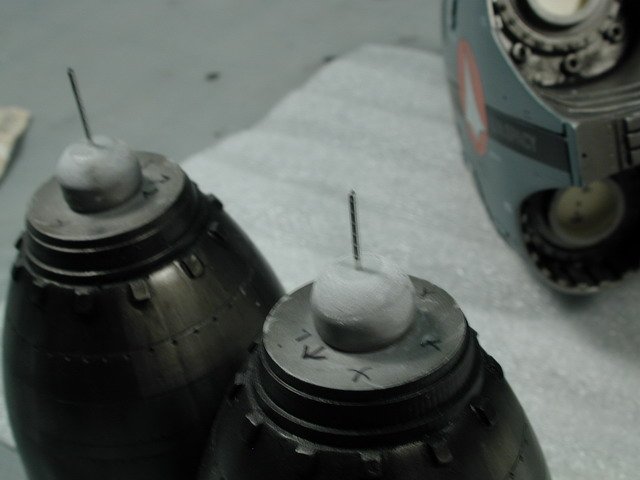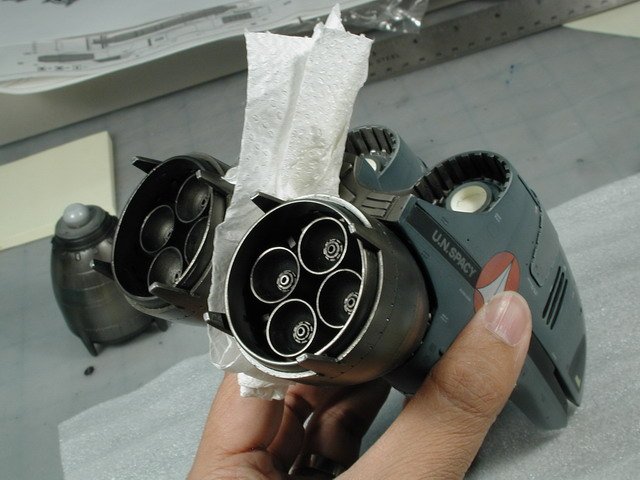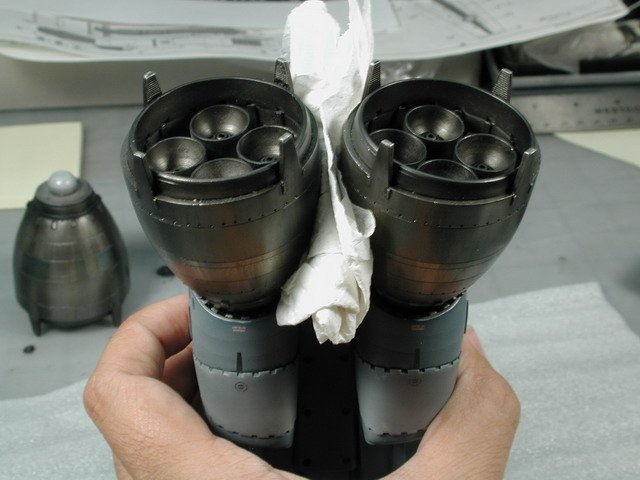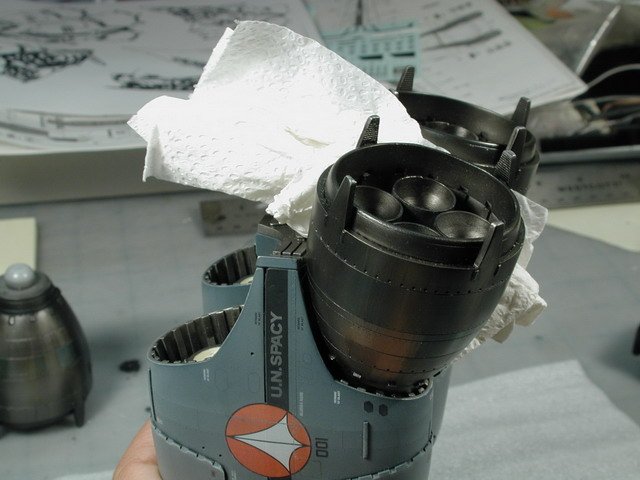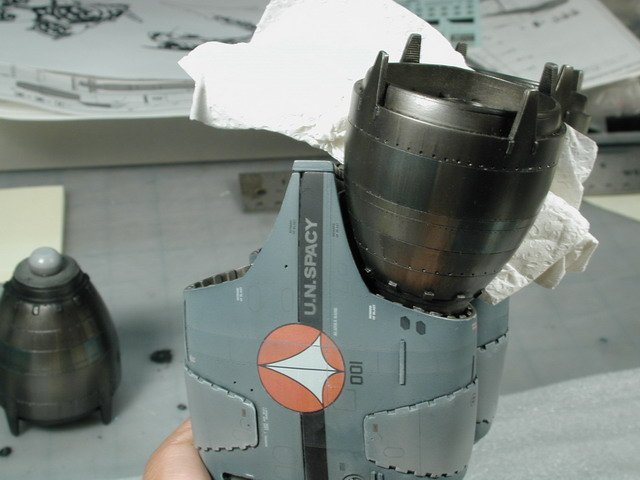-
Posts
4281 -
Joined
-
Last visited
Content Type
Profiles
Forums
Events
Gallery
Everything posted by wm cheng
-
YES, this was the original dropy problem I have too - I bugs me! I guess I was just spoiled by the tightness of my other 1/48s
-
Here are some initial shots at a higher resolution - I just threw a grey card behind it on my work bench (so the lighting isn't great - and its only my Nikon990). When we get a sunny day, I'll take it out to get some proper photos of it, probably with the Launch Rail whenever I get that built. Oh, yeah... I glued in all the clear pieces. They were painted with Tamiya Clear Red and Blue while still on the sprue (since the sprue connection points are all hidden when they are glued onto the Valkyrie. Funny, the wing root lights didn't fit as flush as some of the other Valkyries I've had, maybe the molding has deteriorated slightly (this is one of the later kits that combine all 3 versions, VF-1S/A/J). I back the lights with the Tamiya silver chrome marker, so that from the front you see a nice reflective backing behind/under the clear red or blue (plus it hides the glue mark beneath. I used this stuff called "World's Best Canopy Glue" - its basically a kind of white glue that dries cristal clear and somewhat elasticy - I bought it years ago, and its lasted me - good stuff. I use this to glue all my clear parts. I'm pretty happy with the way it turned out now. I love the non-canon colour scheme (I'm a canon guy - but the white was pretty boring - although Brett did an amazing job on it!) - which is based on my colour scheme for the other super Valkyrie's fast packs. It was intended to sit on the same shelf with the other Valks, so the Booster will be at home right there! Thanks for joining in... I'm so glad to finish this finally! It was so sad sitting on my bench for so long - I hope I get some more time soon to start and finish the Captn' amazing Launch Rail to properly display this bird. Come on! I want to see more Boosters out there.
-
Yay! I got to sneak a few hours last night to finish off this puppy! I save my graphite (from the bottom of mechanical pencil sharpener) and its useful to add little streaks here and there. I has have what is called a rub stick or paper blender used in sketching, basically a rolled up paper stick with shaved ends that I use to apply the graphite and literally draw on the streaks where I think they would occur. I can also do a little heavier post shading on panels that would have to be accessed often that accumulates dirt from crew hands too. It's always useful refer to real-world aircraft photos and references for weathering. Note that I start on the bottom surfaces first (although they would receive less weathering than top surfaces - they are less visible) because I always need to warm up to the technique (I always tend to start too dark) and when I get better and more confident, I move up to the more visible parts of the model. The last time I was at a hobby shop, I picked up this Tamiya Weathering kit, its basically a compact make-up kit that allows you to rub pigment in the form of "foundation" cakes. It even comes with a spongy applicator, and its really easy to apply - and really easy to over-do it! Luckily it seems to come off with a little water and some rubbing. In fact I keep a kneadable eraser handy (you can get them from art supply stores) - they're great because you can shape them into anything you need to lift up excess graphite or this tamiya weathering stuff. The goal is to do a general weathering and spot up some areas of heavy movement on the Valkyrie so that it becomes less of a stark white contrast against the darker grey boosters and overall tie both pieces together (and experiment with using the Tamiya Weathering Kit.
-
Thanks so much for the Kudos! HWR MKII & Dante74 - I have the launch rail, gorgeous sculpt by the Captn' (which will definitely be the next thing I work on - when I can sneak some time in next) but the launch vehicle was just too expensive for me to justify its purchase. No offense to John's amazing work and effort, but I personally didn't like his interpretation of the line art (its just me!), I thought it was just a tad too tall, I would of preferred the vehicle to have been lower and wider - it would have been too much work to modify it to my liking. Plus it would have been $600 worth of resin if I added it all up - that was just too rich for this new father. I still hope to have a vehicle someday, maybe a scratchbuild. Urzu7 - 1. Yes, I did the oil wash directly over the decals - but I wouldn't recommend it. Its because I've done this so often now that I'm beginning to skip some steps (just waiting/asking for something bad to happen!) I would always recommend (even to myself if I had more time - you can tell that my time is so precious now that I'm putting the model at risk to finish it!) sealing in the decals with a clear-coat before doing anything on top of them. If the oil wash didn't work, you could always remove all of it with a paper towel damp with some low-odour varsol and the decals underneath should be still protected by the clear-coat (as long as your clear coat doesn't dissolve with varsol - which ModelMaster Arcyl doesn't) I don't know how watercolours will react to the decals or the clear-coat on the painted surfaces - my guess is that it would bead up into little drops - like water on plastic. I use thinned down oils since it flows nicely on glossy surfaces (never do an oil wash over a flat/matte finish - you'll never get the excess off) Oils are cheap, just get a tube of white, black and brown - don't spend more than $3-4 dollars each - it will last you years! You can mix any shade of grey, rust or white you need. 2. I just don't recommend leaving liquid mask on for years at a time, I usually leave it on anywhere from a day to a few weeks. As soon as the mask feels like dried rubber cement (which I secretly guess is the same stuff but cheaper!) you're ready to paint over it - and as with all masking, remove the masking as soon as your process allows you. You don't want any kind of adhesive to have to sit on your model or paint finish any longer than it has to. It gets quite dry in Canada over the winter, and my model bench is in the basement right beside the furnace, so I'm sure any moisture in the mask was sucked out over the winter! Thanks, Wm
-
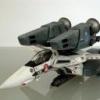
VF-1S Strike Battroid Valkyrie step-by-step
wm cheng replied to DrunkenMaster2's topic in The Workshop!
Hey DM2, try Alclad Metalizers - I used to use Tamiya colours on my Valkryies too, but I found the metal particles in the paint to be too big for the scale, it looked rough. But then I was told to try Alclad (http://www.alclad2.com/lacquer_colors.html) and I have never looked back - the stuff is amazing! It really makes your parts look like metal. Its airbrush only though. -
Lastly how could I not try and put the Valkyrie into the Booster pack?!! and off course zoom it around the room! I'm pretty disappointed with the photos, there are so many subtle details in the paint finish that doesn't seem to show through, I may shot it again with a DSLR or post larger pictures. I think a lot of detail was lost when I reduced the photos to something that I can post here easily. Well, it looks like I need to get cracking on the launch rail / stand next - there is really no way to display this bird without the stand, I don't want it to rest on the engine bells or risk breaking off those little fins at the end each of the engine bells (plus its so back heavy - the almost solid resin Boosters do weight).
-
OK, finally buffed the canopy back up, and applied the black canopy frame decals (this is such a life saver from Hasegawa! - I hated painting canopy frames always!). Unfortunately all the photos make the plane look new and the black stripes so stark - I may try some shots with my DSLR next time. I'm just glad I gotten to the point where I could take all the masking off. I was a little afraid to find out what I had beneath! I was able to glue the head, laser antennas, and the gunpod on finally. All thats left are the clear parts such as the wing root lights, nav lights on the wingtips, nosecone blisters and the leg chin lights. Also I want to go over the weathering a bit more and apply some dry pastel and graphite to the bird - smiliar techniques that I learnt to do from my VF-0S thread, but just not as heavy, such as light hydraulic staining from the flaps and vented areas. I got that "makeup compact" weathering set from Tamiya that I may try out on this plane if I get the nerve.
-
Now the part of the day I've been looking forward to (literally for a year!) - taking off the masked bits, the tamiya tape from the engine nozzles which were sprayed with a combination of Aclad2 metalizer gunmetal and burnt metal and the canopy liquid mask. Again, the same problems I had with the liquid mask drying up on those 3-slotted vents on the Booster body had occured here on the canopy as well. The mask had dried up to the point where it wasn't coming off easily and started to break off in flakes - what should of been a 5 minute job ended up taking hours and leaving scratches and debris all over the canopy. Once I removed all the remaining bits of masking, I had to carefully re-polish the canopy with Tamiya Fine Rubbing Compound to get the sheen back to the canopy (the Future coating was damaged by the liquid mask either drying up or the rough process of removal). So let this be a lesson to all ya, don't leave anything with a liquid mask on while you take a year break!
-
I allowed an hour or so for it to semi-dry and I wiped the excess off with a paper towel - careful to leave as much of the oil wash inside the panel lines as possible. After the excess oil was removed, I airbrushed a very light thin coat of white over the front leading edges of the black stripes of the decals to lighten them up and blend them into the paint finish, this reduced the stark contrast between the black and the white portions of the plane and weathers them a bit so they appear a bit faded towards the front of the aircraft. Once I was satisfied, I clearcoated the entire plane and protected the decals with a nice even spray of ModelMaster Acryl semi-gloss clear coat. This ties together the sheen of the decals to match the sheen of the paint and further makes them look painted on.
-
After the decals had fully dried, I decided to do an oil wash over them to tie in the panel line details over the decals - this is an essential step to make the decals look painted on, part of the model instead of laid over top of your paint. I used white over the dark or black stripes and a medium grey over the lighter areas of the decal such as the UN SPACY lettering or the yellow stripes.
-
Come on! lets see more finished Boosters! Well, I got one of the bestest birthday presents of all this past weekend, my wife took care of our baby and gave me almost 6 whole hours of uninterrupted modeling time!! Woohoo! I finished decaling the Valkyrie! Man, that's a lot of tiny little stenciling, but I love it. I didn't apply decals in the tail area since it will slide into the Booster and be hidden from view almost all the time (except on the rare occasions that I would separate the Valkyrie from the Booster). I varied my painting of the Valk this time, I introduced as many grey/non-white elements to the white Valk to make it a little more interesting, the most notable difference is in the leading slats to the wings where I painted them silver (I quite like the look although not canon to artwork), I also painted the area behind the folding wings in a grey and light grey stripes by the top of the air intakes. The plane is actually more weathered and the shading is a little more pronounced in person, the photos tend to "white-wash" the plane out and make it a little newer than it actually appears. I have my older VF-1A there for reference to decal placement and comparison (hard to believe that was the first Vf-1 I've ever built!).
-
Oh, the yellow is metallic gold foil - thats a little better, but nah, I'll still pass - pretty unimaginative, plus that script fonts has gotta go! I doubt it will be molded in those metallic colours though (if it is, it would be impossible to get rid of the seam lines!).
-
OK, I couldn't resist to take more pictures of it! (I've been waiting to see the engine bells on for months!) Plus now I test fitted the Valkyrie on as well - again its not all the way in, but it gives the idea! In the second last shot (when the lighting is just right!) you can actually see into the 3 grilled meshed slot and see some of the engine compartment details! YAY!! Now I've got to finish the Valkyrie decalling... (so close... ) p.s. is there some way to add attachments more than one at a time?
-
I basically repeated the procedure for the upper bells now. I thought I'd do the lower ones first - to get the hang of things and in case something went wrong, its in a less noticeable part of the model. The trick is to constantly eye down the back of the booster to make sure that the engine bells are evenly spaced and the glue doesn't cure while anyone bell is skewed since there aren't really any registration notches or marks and you can really glue the bells in whatever position you like. I personally like them splayed out. Its good that the mounting point is so far deep into the booster, cuz I used a lot of epoxy to get these babies in place! I do love the way they look - the flat booster finish is a good contrast to the metallic finish of the engine bells and the bluish faint panels on the bells ties quite nicely to the boosters. I don't think I'm going to weather the engine bells with a burnt edge since I don't think they are reusable - but I'll may change my mind when the entire thing is done. Right now, they only have a dark oil wash on them. Having all four bells glued on does make the whole thing really back heavy - and I want to handle them with care. You shouldn't let it sit on the table since those four resin tabs on the end of the bells could bend or worst snap off over time. I guess my next build will be the launch rail - otherwise there really isn't a way to support and display this bird properly.
-
Snuck in a few hours on the long Canada Day weekend! One of the most anticipated steps - I get to finally mount the engine bells onto the Boosters. My only concern here is that they are pretty big resin bells and weigh a quite a bit. They mount via a ball-like joint on the boosters, and the actual glue contact point isn't that large - I'm afraid they are kind of like levers which can translate into a pretty large amount of force at the glue contact point. Luckily upon test fitting, the actual glue contact points are pretty well hidden within the recess of the booster housing - the plus is that we can put a huge goop of glue here without having to worry about what it would look like - the con is that all of those amazing details John had sculpted is pretty much hidden once the bells go on. I've decided to use 5 minute epoxy here and thought I should reinforce the connection by pinning it with a metal paper clip. I chose a pin-vise bit that was the size of the paper clip and found a relatively thick gauge paper clip what was serrated (otherwise I would rough up the metal with a coarse sandpaper) anything to give more tooth for the glue to hold onto - otherwise the smooth metal would just slid out of the epoxy once it cured. I drilled both sides in the centre, then did a test fit and angled the engine bells so they splayed outwards like the line art - the paper clips also bent to the right angle and will help hold the bells at the right angle for the glue to cure. I also took coarse sand paper and roughed up the engine balls so that there would be more tooth there for the glue to grab hold of too. I folded a paper towel inbetween the bells to keep them separated at the angle I wanted - test fit the whole arrangement with the upper bells (since they can be swiveled out much farther than the lower ones - the lower ones are trapped by the depth of the mounting socket so they can't be splayed too far without rubbing the outside edges of the lower half of the booster). Once I found that happy medium, I slathered on the 5 minute epoxy and glued the bells and literally held the bells and boosters in place in my hands for 5 minutes.
-
Ok, no real new progress... but when I took the photo of the template for Gabe, I couldn't resist just putting the Valkyrie onto the booster to take a look at! With the modifications I made to the Booster, the Valkyrie is now removeable (which I suggest all to do since it make painting so much easier later on) the fit is rather tight and snug though (thanks to the Captain's precision sculpt!). The Valk isn't all the way in... its a really tight fit, so its in partially for now so I can easily take it out again. Can't wait to pin and glue the engine bells (maybe this weekend!) (p.s. I switched back to my old Nikon 990 camera - I just leave it collecting dust now that I have my Nikon D80 DSLR which is so much better as can be seen by the earlier pictures, the colour of the previous shots are so much more true to life - but the Nikon 990 still has better Macro and close focusing capabilities)
-
-
Once all the decals were down and allowed to dry (very important to not futz with it when there is MicroSOL on top of the decals - I've ruined tons of good decals by playing with the model and touching or holding it in the wrong place!). I left it overnight to make sure. I then took a relatively soft mechanical pencil (lead 2B) and lightly drew in some additional panel lines, access hatches and details over the decals. I got this great photo-etched scribing template from Verlinden - its mostly WWII aircraft access hatch shapes - like losenges, but its useful. I haven't got up the nerve to use it as a scribing template yet - I will someday. Using the airbrush again took a few tries at getting used to it again. Being away for more than a year really made me feel un-easy about the whole process. I had to redo a lot of the fine spraying (ie; I sprayed some sky-grey and medium blue over areas so that they didn't look so flat, and accentuated some of the panel lines while tying in some of the lighter decal stenciling so that they look more painted in and didn't stand out with so much contrast. I then clear-coated the entire thing in ModelMaster Acryl flat/matte finish. This protects the decals somewhat, protects the pencil details from smudging, and blends in the decal finish so it looks like the rest of the model. It also has an effect of lightening the overall finish of the booster (which is good since it mates up with a somewhat white plane). I established this matte booster on semi-gloss plane before with my other Super-Valkyries - so I wanted to follow suit - since they will be displayed together. The matte finish makes it more utilitarian IMHO. Once the flat finish had dried, I took a bit of flat white and did a light overall dry-brushing hitting the highlights of the model - paying close attention to the serrated grey hatches above and below. Together with the previous dark oil wash, and this lighter dry-brushing, I think it adds a lot more depth t othe model (oven though the shape of the model is relatively flat on the sides). Overall I am very happy with the way it has turned out now. I spent way too much time and effort on those 3-slotted vents that I don't think it pays off in the end. You can hardly see the engine details I put inside the mesh (if I chose a larger holed mesh, then it would look out of scale). Now I think if I can get away for a hour in the next few days - I can't wait to attach the engine bells!
-
Thanks for the tip - I ended up just picking at it some more until I was totally frustrated - then I wanted to move on to decaling! I tried to do a dark / flat black wash over the mesh, so that any remaining blue masking residue became black or dark grey, it also toned down the bright reflective quality of the steel mesh and gave it a more scaled appearance. I used some of Anasazi's great decals - the correct size for the Space Kite symbol appears to be the 1/48 Yamato fastpacks kite. Along with tons of stencilling from my decal spares. The UN Spacy letters on the black stripes were from the extra grey ones Hasegawa provided with the YF-21 kit in grey - I then re-sprayed a light coat of flat black over the decals to further tone them down to a dark grey so they blended into the black stripe a bit more - I didn't want them to stand out so much. Before I decalled, I made sure that there was a semi-gloss clearcoat base for the decals to adhere too. Since this is a relatively dark base with the end result being a flat or matte finish - this is a prime candidate for the silvering of the carrier film to show through. To minimize this possible end result, I used a smooth semi-gloss base coat (a glossy one would be better, but it may attract fingerprints), then I applied liberally the MicroSET solution to the surface of the model to be decalled. I trimmed as much of the excess carrier film as possible, when I slid the decal onto the model surface, I pressed them down with a wet paper tower to remove any possible air bubble underneath. Once in place I painted MicroSOL over the all the decals to get them to lie flatter against the model.
-
Hey Grayson, whats NM?
-
Thanks so much Electric Indigo! I actually ordered the magazine now. Did you know there's another Yamato modellng manual - I got it off HLJ a little while ago. Now if there's some kind soul that can translate Japanese for me?! ;-) I'd be set! Painting those figures are simply crazy!! I don't think in my wildest dreams I can do anything approaching what these people can do - for those of you who don't have the kit, the little scaled figures are literally 1/8" - 3/16" tall! but they hold tremendous detail, right down to their shoulder stripes. It goes to prove what kind of molding technology they have.
-
I don't think I have just pure ammonia. I've tried windex with ammonia, and it doesn't seem to do much with the liquid mask - however, its a great solvent for Tamiya paints though, that's what I use to clean out the airbrush.
-
Thanks, because I've tried all my stuff; alcohol, Mr. Color thinner, Tamiya thinner, Metalizer thinner, ModelMaster Acyl thinner/solvent, Varsol, Acetone, & Nail polish remover - but still no go. Gawd! what is this stuff made of?! Where do I get cellulose thinner? Is it a hardware thing? Paint solvent?
-
Thanks Recon for that bit instructions - it helped. I still have a problem with a droppy nose from the darker grey heat shield forward when I'm zooming it around the room, its fine when the gears are deployed and it sits on the ground, the weight of the plane on the front nose gears closes up the gap in the heat shield. That's why we don't see it in pictures since everyone shots it with the gears deployed sitting on the ground. Here's my two cents worth after having the two for a week. Its a wonderful looking toy! One of the best sculpts and I love the grey on grey scheme. Visually its one of the best Yamato has come up with. As a toy per se, it doesn't have the playability of the 1/48 VF-1. I've transformed it into all three modes, and its one of the most difficult finicky transformations ever, I am always afraid to stress the parts, it feels flimsy and the hinges seem too thin to take the stress (I have white stress marks on the dark grey over the shoulder double hinges already only after a few transforms - these should have been metal too). Its a bad combination of some parts being too way too tight (such as step 07 when you push the nose forward to release the heatshield or the second hinge in the tailfin section to flip up) and other parts just being too flimsy and flopping open (such as the inovative side doors to the head underneath falling open or the head flipping down in Gerwalk). I love how the forward fuselage retracts into the chest shield to reduce the torso length - great design here. Its a great instant "model" - it LOOKS fantastic, but I wouldn't want to transform it often. In the end, I think its worth it for me, since I don't have time to build any models at the moment, its instant gratification. Its something more to be left in one mode and looked at or occasionally picked up and zoomed around. And really, after the "newness" of all my other Yamato birds wear off, it usually ends up on my shelf in one mode or another to be looked at and occasionally picked up. Because it's sure purdy!! Can't wait to panel-line, weather and hopefully Anasazi or someone will provide us with some waterslide decals for this baby!!
-
Thanks! The colour scheme was to match my other VF-1 Valks with the Fastpacks, its a very similar blue/grey, I thought that this Booster was just another REALLY REALLY big fastpack type of equipment add-on for the Valks. Yeah... believe me, I thought about doing something to cover them up and call it a day. But if you remember, I spent all that time hollowing out the inside of the resin cast so I could fit engine mechanical details behind the screen. What a waste of time that was! You can hardly see anything behind the screen now - I think the screen is a bit too reflective and the mesh too fine. I may dull it down or tone down the silver so we can see into the engine compartment a bit more, but only after I figure out a way of getting all the tiny bits of blue liquid mask out of all the tiny mesh holes first. Solvent is the way to go I think, if I can find the right stuff.


